We've tracked down the most beautiful stately homes in Great Britain
How the other half live
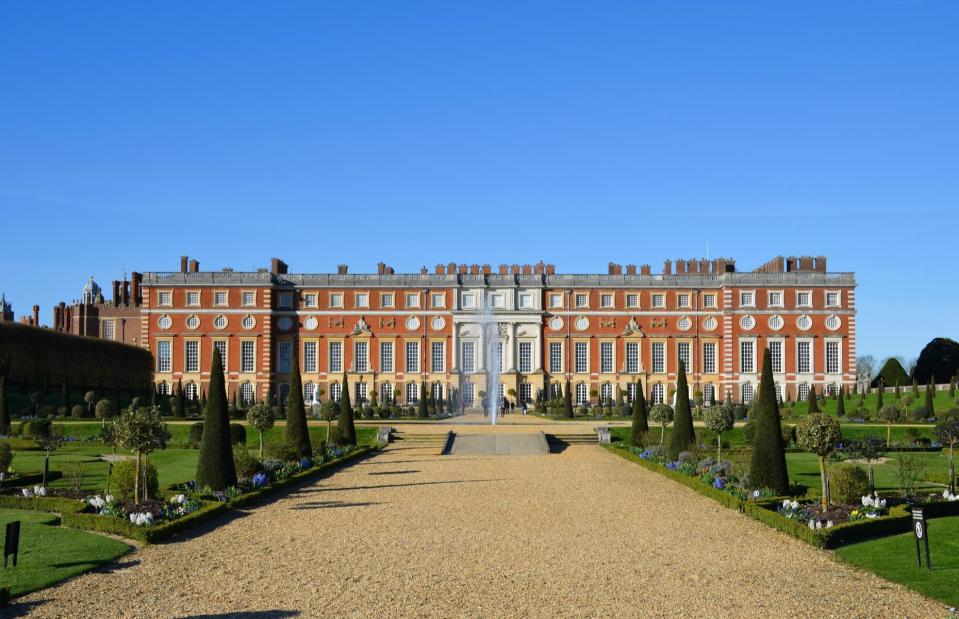
ioyla/Shutterstock
The UK has an abundance of stunning country piles, here we show you around some of the most incredible stately homes that are open to the public.
Read on to discover the most beautiful stately homes in Great Britain...
Chatsworth House, Derbyshire, England
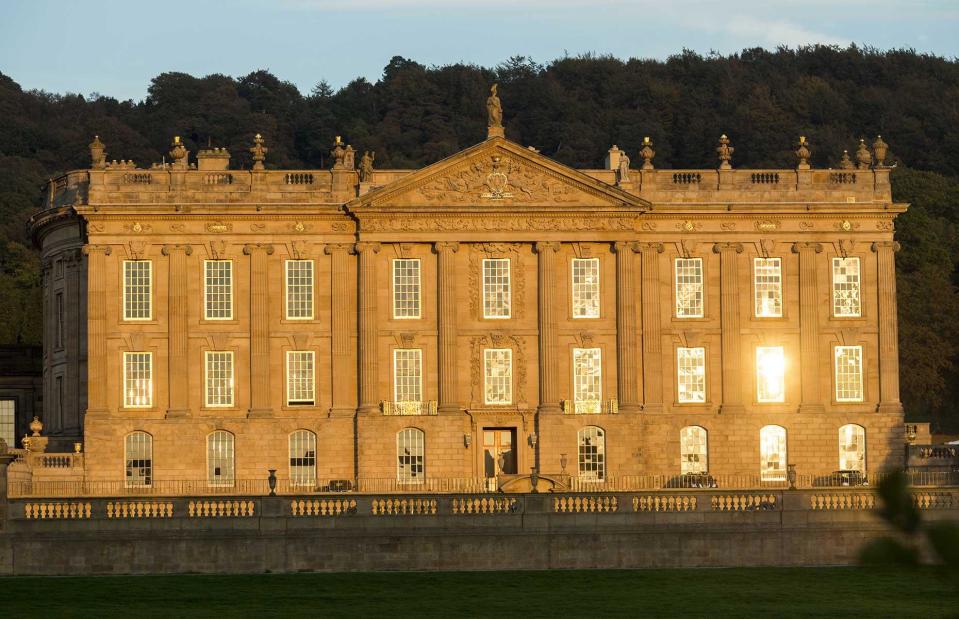
david muscroft/Shutterstock
Situated in England’s gorgeous Peak District, Chatsworth House is one of the country’s most well-known stately homes. Originally built during the 1500s, the old Tudor mansion was partly rebuilt by the 1st Duke of Devonshire in the late 17th century, who created the amazing Baroque building of today. Chatsworth is currently the home of the Duke and Duchess of Devonshire and is pictured here at dusk.
Chatsworth House, Derbyshire, England
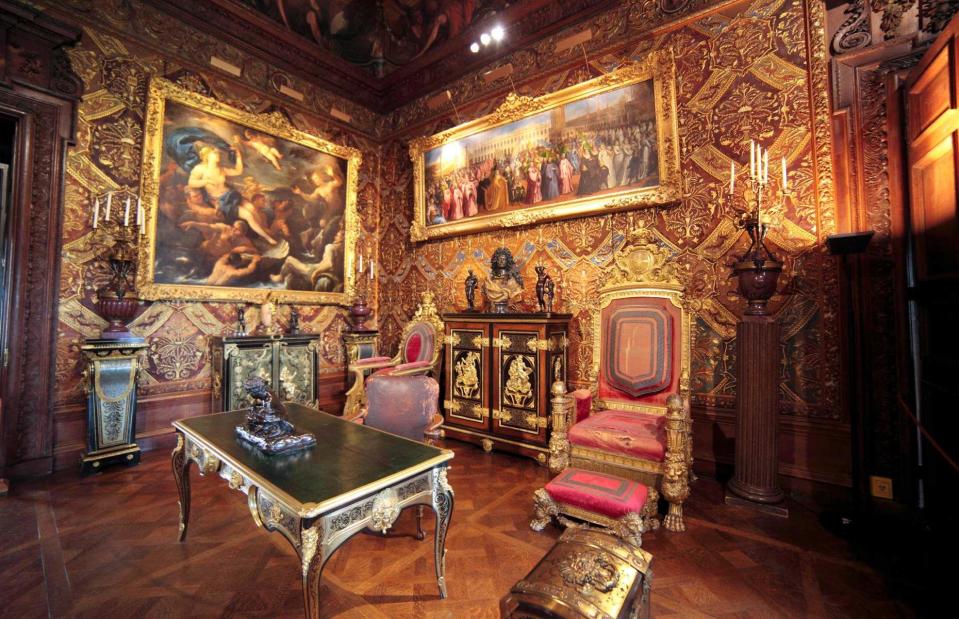
Jon Arnold Images Ltd/Alamy
The lavish house is as opulent inside as it is outside. The rooms are filled with the Devonshire art collection, spanning classical sculptures to modern paintings. Built by William Spencer Cavendish, the 6th Duke of Devonshire, the glorious sculpture gallery includes marble figures of ancient Greek gods Achilles, Venus and Cupid.
Chatsworth House, Derbyshire, England
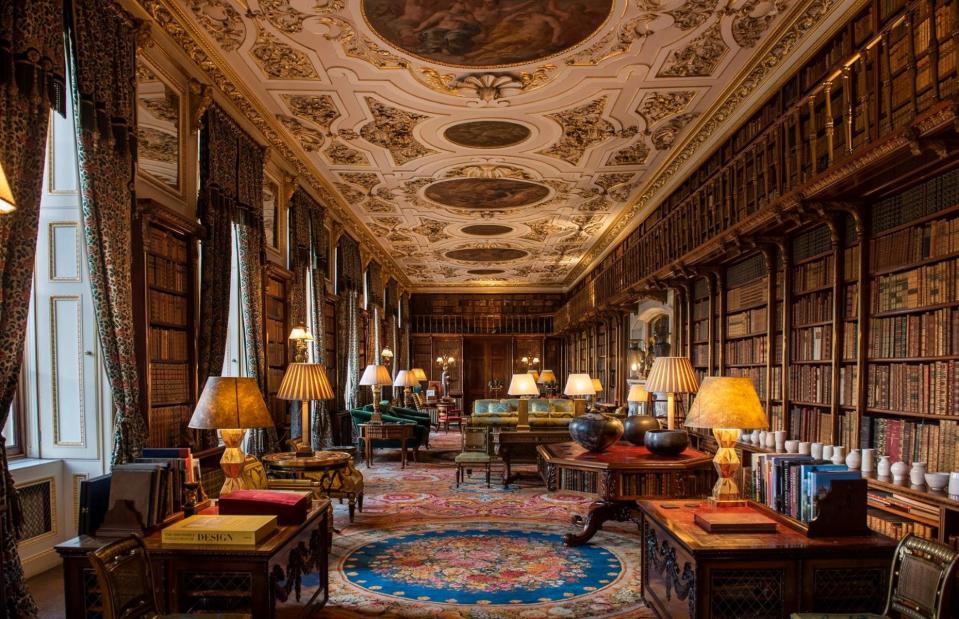
Chatsworth House/Facebook
The stunning house has also had its moment on the silver screen, with a cameo in the 2005 film Pride & Prejudice starring Keira Knightley and Matthew Macfadyen. It provided the exterior of Mr Darcy’s fictional Pemberley estate.
Chatsworth House, Derbyshire, England
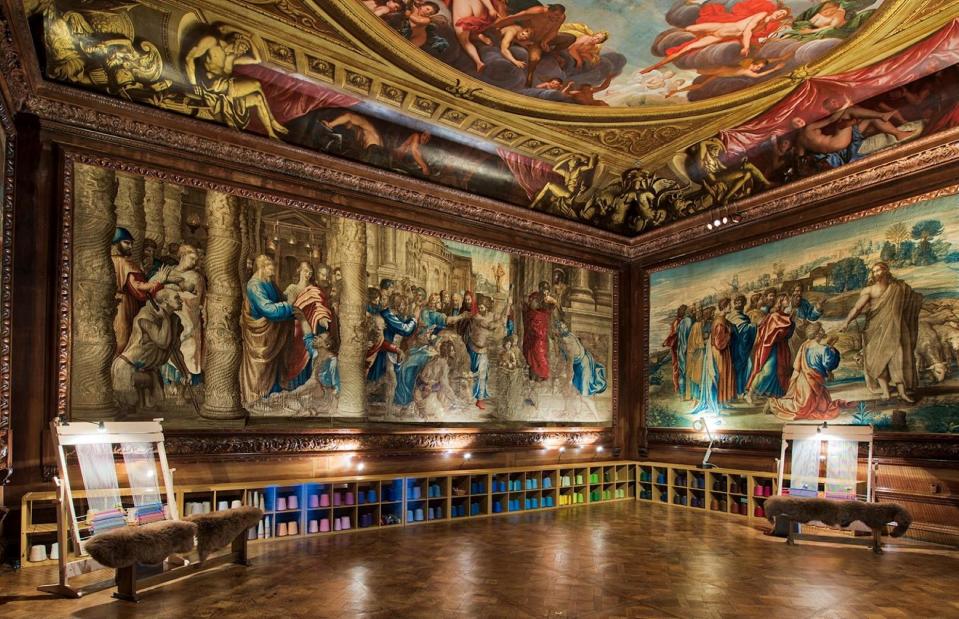
Chatsworth House/Facebook
Pictured here is one of the grand state drawing rooms which were intended to host royalty and select guests. During the Second World War, the rooms were used as dormitories for a boarding school until 1945. The room features a biblical tapestry showing events from the life of Christ.
Alnwick Castle, Northumberland, England
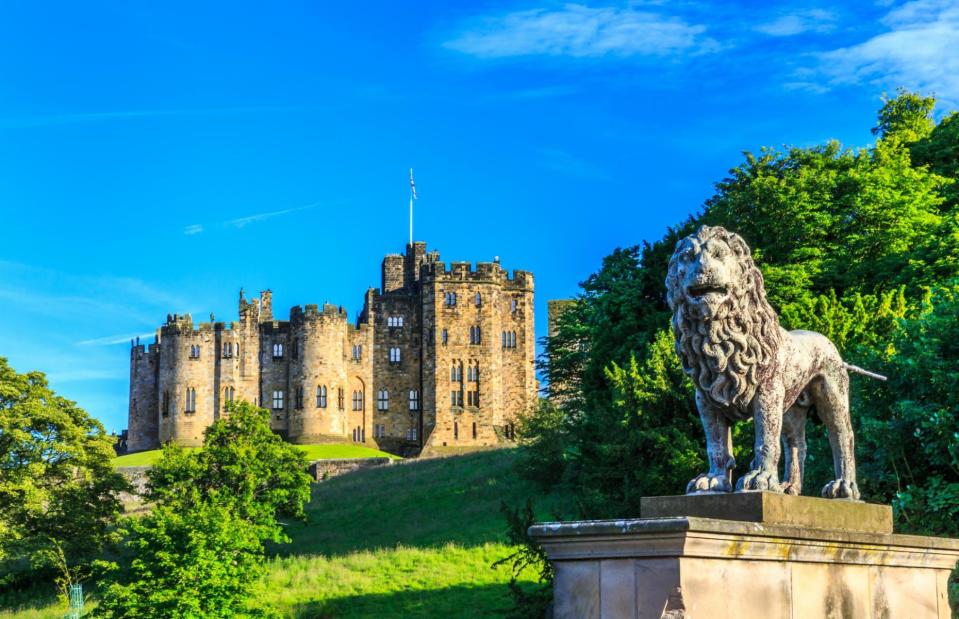
iLongLoveKing/Shutterstock
Nestled behind the pretty market town of Alnwick, this majestic medieval castle is the second largest inhabited castle in England. Alnwick has been home to the Percy family for over 700 years and is the current seat of the 12th Duke of Northumberland, Ralph Percy.
Alnwick Castle, Northumberland, England
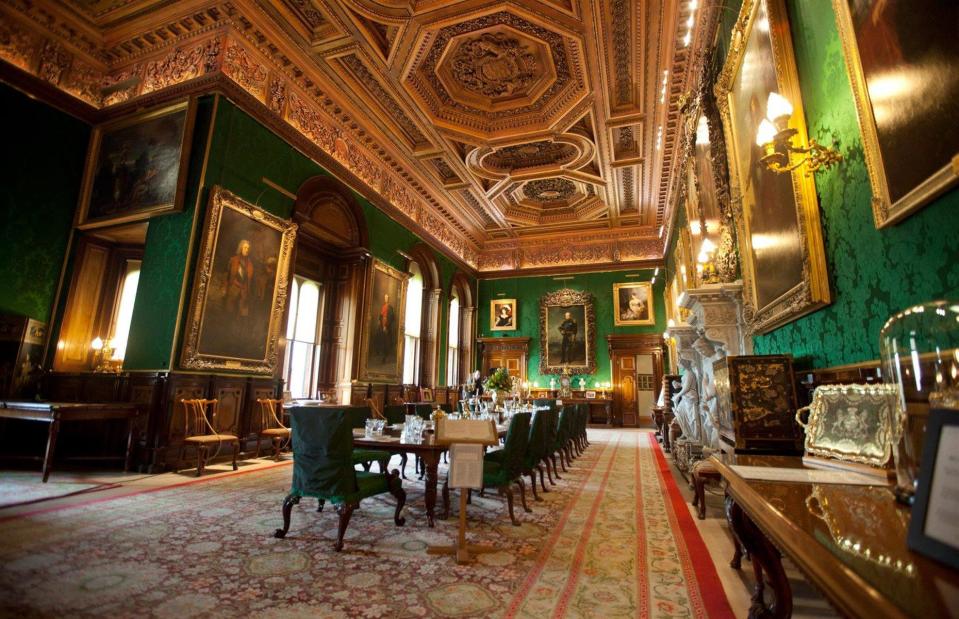
Alnwick Castle/Facebook
Inspired by the lavish buildings of Italy, the Renaissance-style state rooms feature richly decorated ceilings, carved doors and marble fireplaces. The castle also has one of the country’s most impressive private furniture and art collections with works by JMW Turner, William Dobson and Canaletto.
Alnwick Castle, Northumberland, England
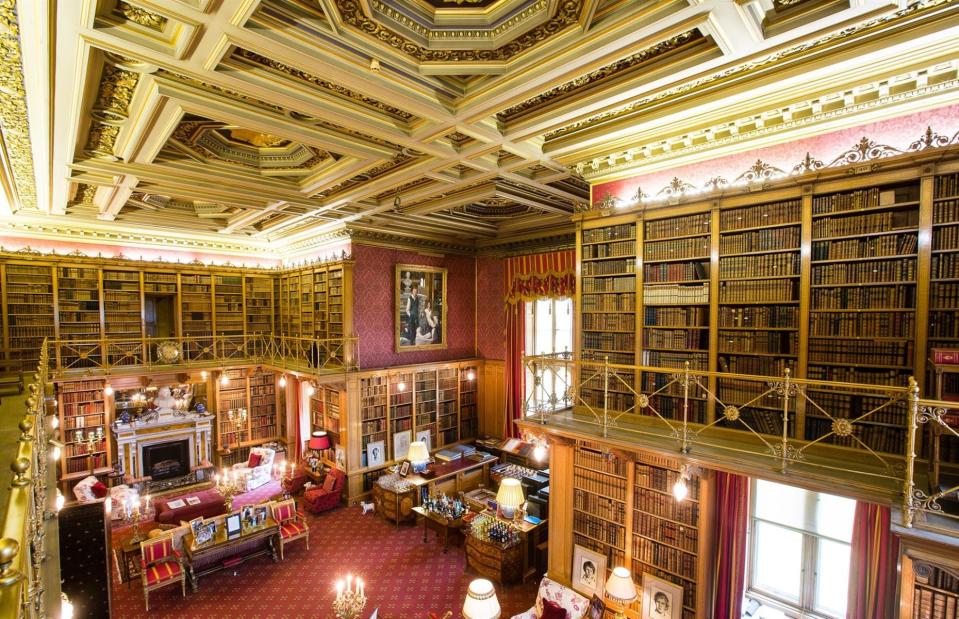
Alnwick Castle/Facebook
The beautiful library is a book lover's dream. The opulent room houses nearly 15,000 books and is located in a large tower that was added to the keep during the 19th century. It's apparently the Percy family's favourite room.
Alnwick Castle, Northumberland, England
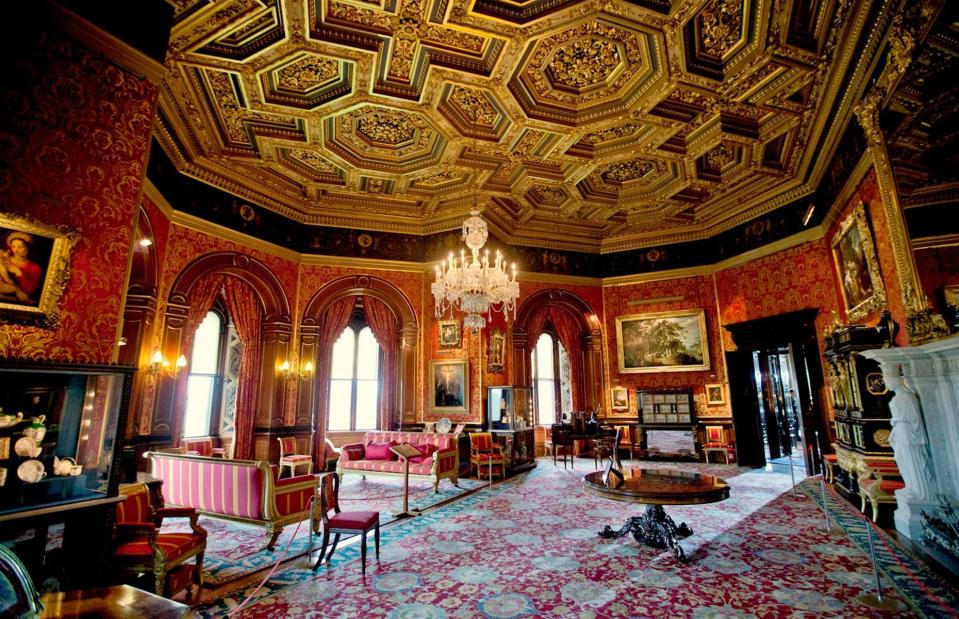
Alnwick Castle/Facebook
The castle is a film industry favourite, known for standing in as Hogwarts in Harry Potter and the Philosopher's Stone and Harry Potter and the Chamber of Secrets. The castle's Outer Bailey and courtyards were the location of Harry and his classmates' first broomstick lesson, and also where Harry learned to play Quidditch.
Hever Castle, Kent, England
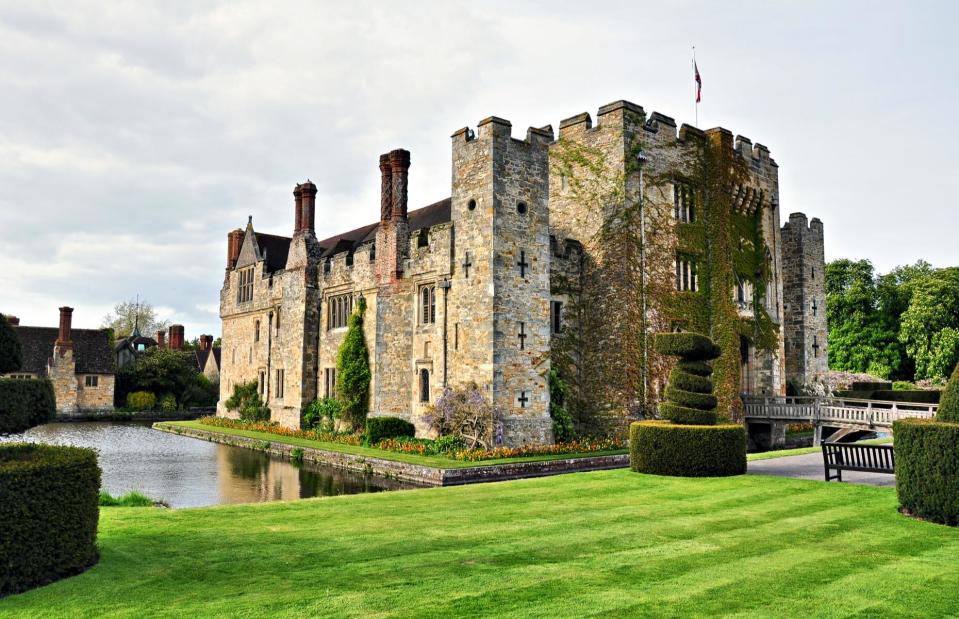
Hever Castle & Gardens/Facebook
Once the childhood home of Anne Boleyn, King Henry VIII’s second wife and mother of Elizabeth I, this magnificent castle is tucked away in the quiet village of Hever. It has a long history, dating back as early as the 13th century.
Hever Castle, Kent, England
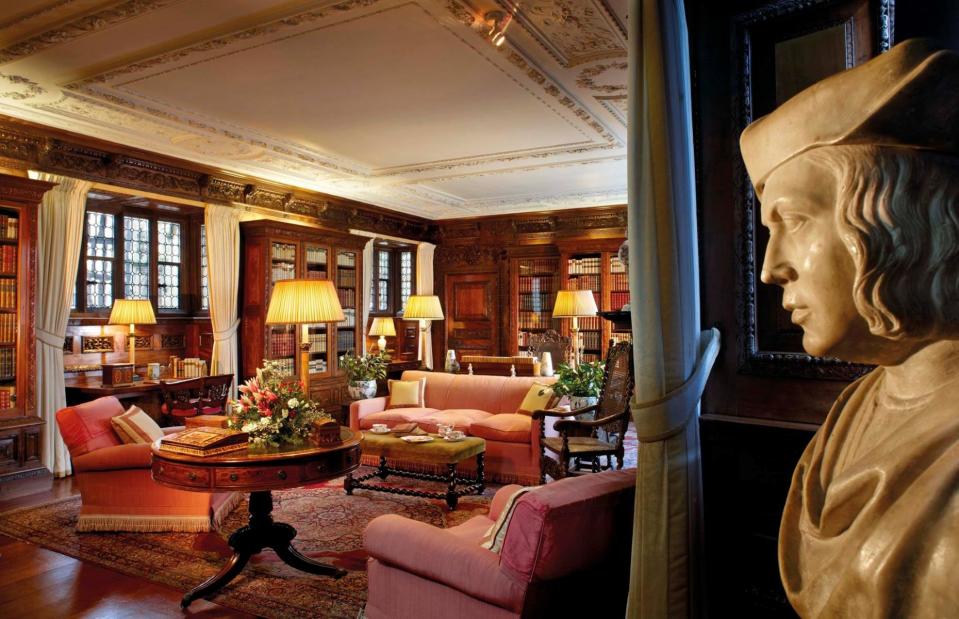
Hever Castle & Gardens/Facebook
Built in 1270, the original medieval defensive castle features a gatehouse, moat and walled bailey. During the 15th and 16th centuries, it was owned by the Boleyns but later came under the ownership of another of Henry VIII's wives, Anne of Cleves, when their marriage ended in divorce.
Hever Castle, Kent, England
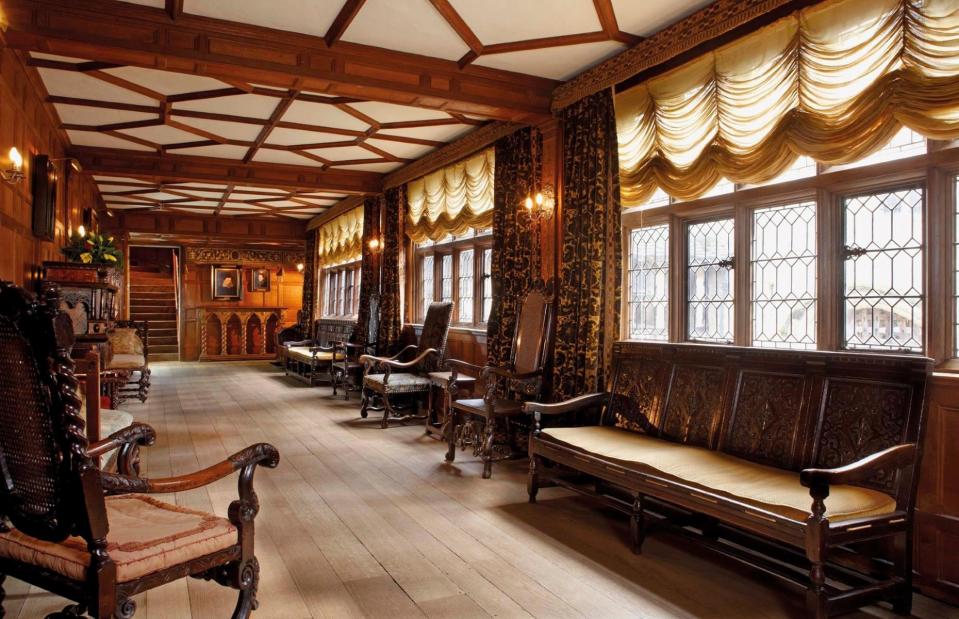
Hever Castle & Gardens/Facebook
The staircase gallery (pictured) was built in 1506. It contains a rare portrait by French Renaissance painter and miniaturist Francois Clouet, depicting Mary Queen of Scots in mourning over the death of three close family members.
Hever Castle, Kent, England
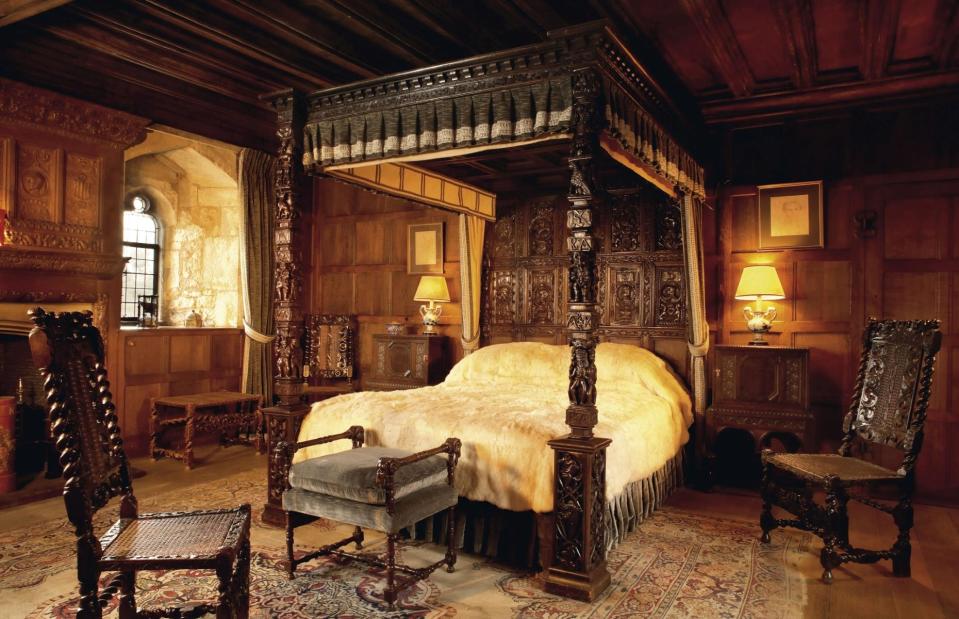
Hever Castle & Gardens/Facebook
It is believed that during Henry VIII’s courtship of Anne Boleyn he stayed at the castle several times, and that this was his bedchamber. The lavish bedroom reportedly has the oldest ceiling in the castle, dating from 1462.
Chartwell, Kent, England
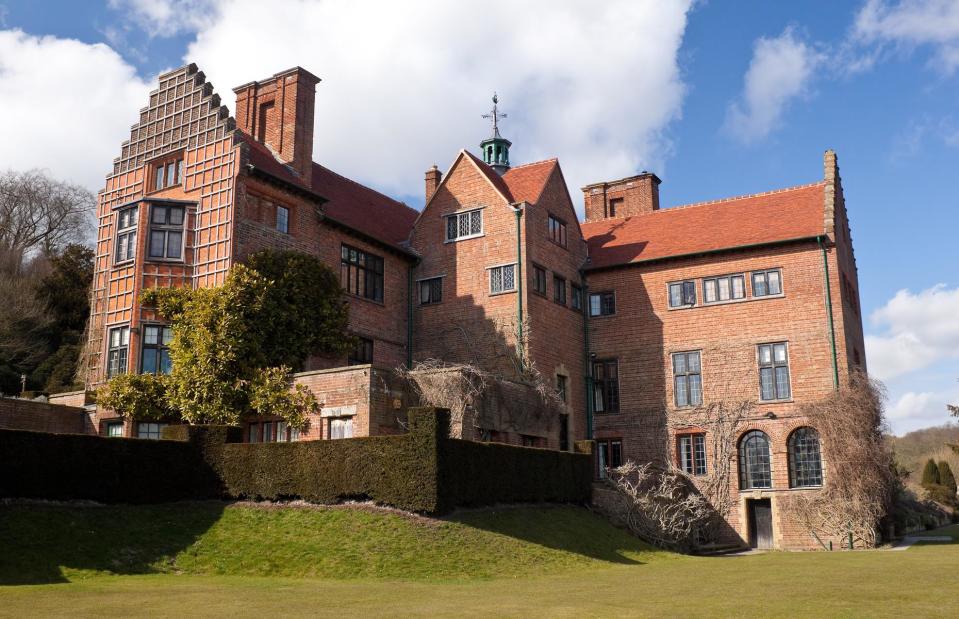
Chartwell House/Facebook
Located in the beautiful Kent countryside, Chartwell was Sir Winston Churchill's main residence from 1922 until shortly before his death in 1965. It became a National Trust property around 1946, on the condition that Winston and his wife Clementine could live there as long as they liked.
Chartwell, Kent, England
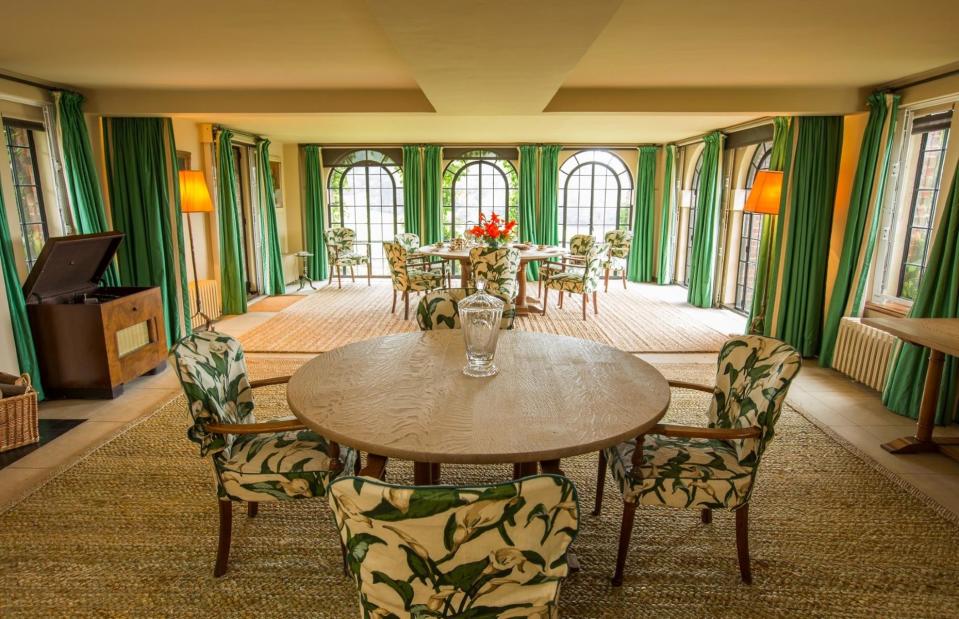
Chartwell House/Facebook
Inspired by the gorgeous landscaped gardens and surrounding countryside views, Churchill originally purchased the property near Westerham in 1922. After he employed architect Phillip Tilden to give the house a much-needed makeover, it quickly became a beloved spot for Churchill to escape the crowds of London.
Chartwell, Kent, England
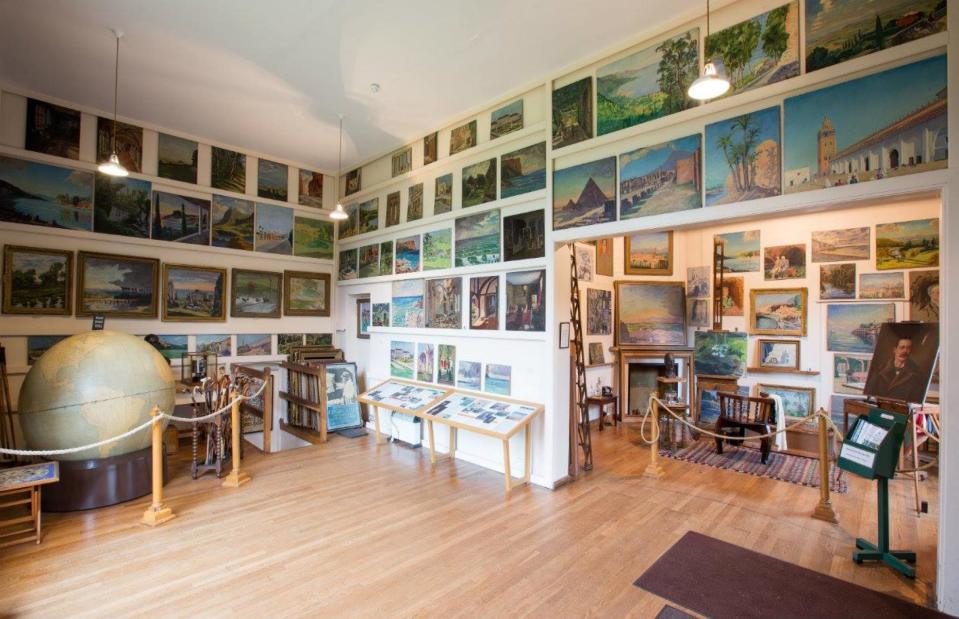
Chartwell House/Facebook
As well as an iconic politician, Churchill also became an avid painter later in his life, converting a cottage at the property into his very own art studio and refuge. More than 100 of his paintings are on display all over the house.
Chartwell, Kent, England
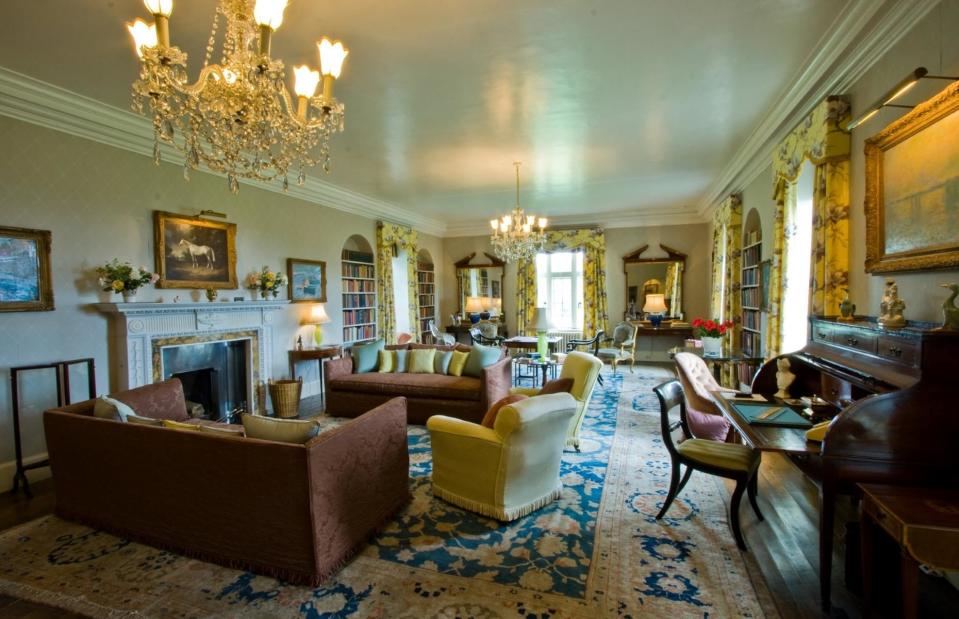
Chartwell House/Facebook
Chartwell also houses Churchill’s impressive book collection in the working library, ranging from autobiographies to poetry, and a huge collection of the family's treasures including photographs, fine china and cigar boxes. The jewel in the crown of the property is the stunning hillside garden featuring lakes, Lady Churchill's rose garden and the Marycot, a playhouse built for their youngest daughter Mary.
Leeds Castle, Kent, England

Petrin Evgenii/Shutterstock
Surrounded by over 500 acres of parkland, five miles (8km) southeast of Maidstone, lies the beautiful Leeds Castle. From a Norman stronghold during the 11th and 12th centuries to a Tudor palace, the castle has a rich past spanning centuries.
Leeds Castle, Kent, England

Leeds Castle/Facebook
In 1665, the property was leased to the government to keep Dutch prisoners of war who then set it on fire. The castle remained in a state of disrepair for around a century until 1748 when Robert Fairfax renovated it. Eventually, in 1823 new owner Wykeham Martin demolished the original main house and replaced it with one in a Tudor style. Not much has changed of the castle's exterior since then.
Leeds Castle, Kent, England
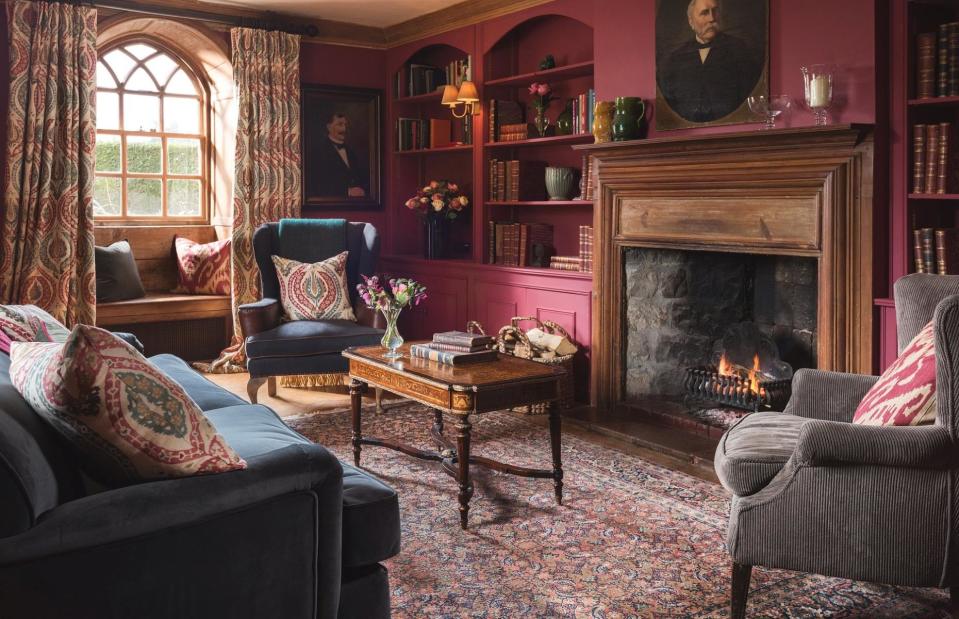
Leeds Castle/Facebook
During the 1920s, Leeds Castle underwent another makeover, this time by Anglo-American heiress Lady Baillie, who would be the property's last private owner. A 16th-century-style carved oak staircase from France was added to the castle as well as a cinema and swimming pool. Zebras and llamas were brought to the grounds.
Leeds Castle, Kent, England
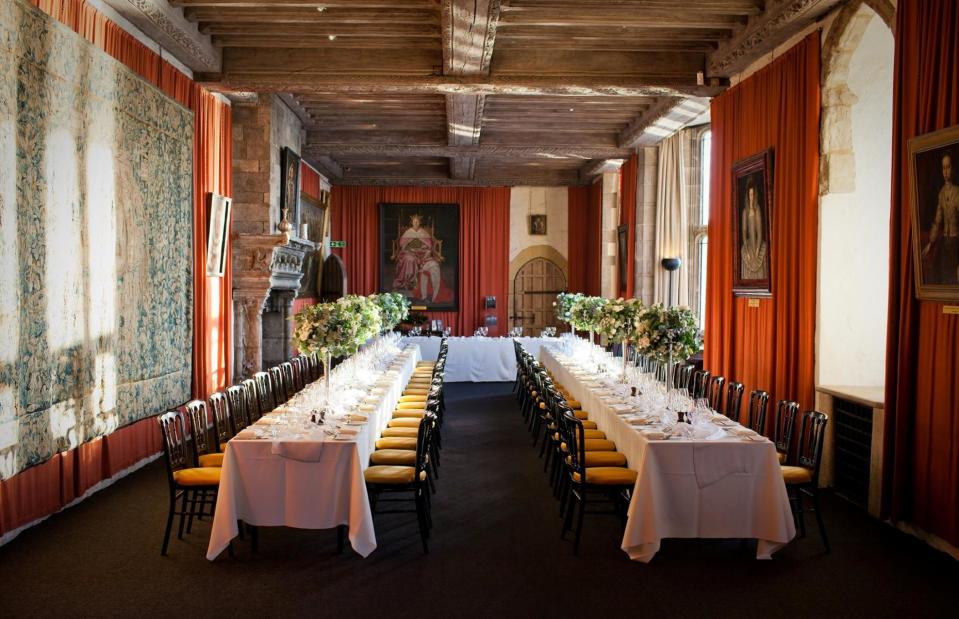
Leeds Castle/Facebook
In the 1930s, the castle played host to European royalty, celebrities and statesmen, famed for its luxurious interior and Lady Baillie's lavish hospitality. After Lady Baillie’s death in 1974, the property was left to the Leeds Castle Foundation and opened its doors to the public two years later.
Blenheim Palace, Oxfordshire, England
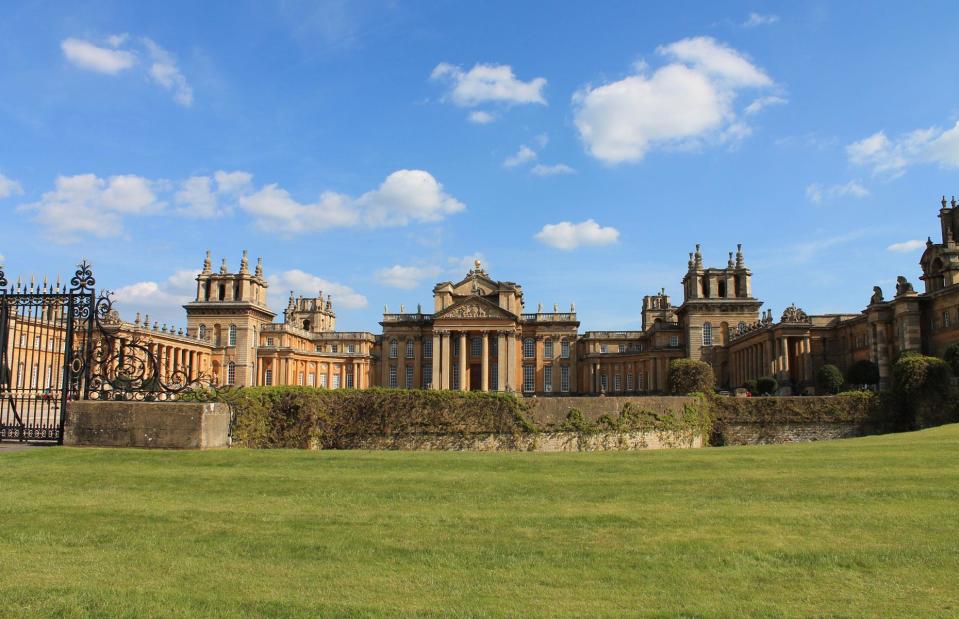
Blenheim Palace/Facebook
Blenheim Palace was built in the early 18th century and today this beautiful Baroque palace in Woodstock is one of England’s grandest stately homes. Its gardens were created by famous landscape architect Capability Brown and the property was even inscribed as a UNESCO World Heritage Site in 1987.
Blenheim Palace, Oxfordshire, England
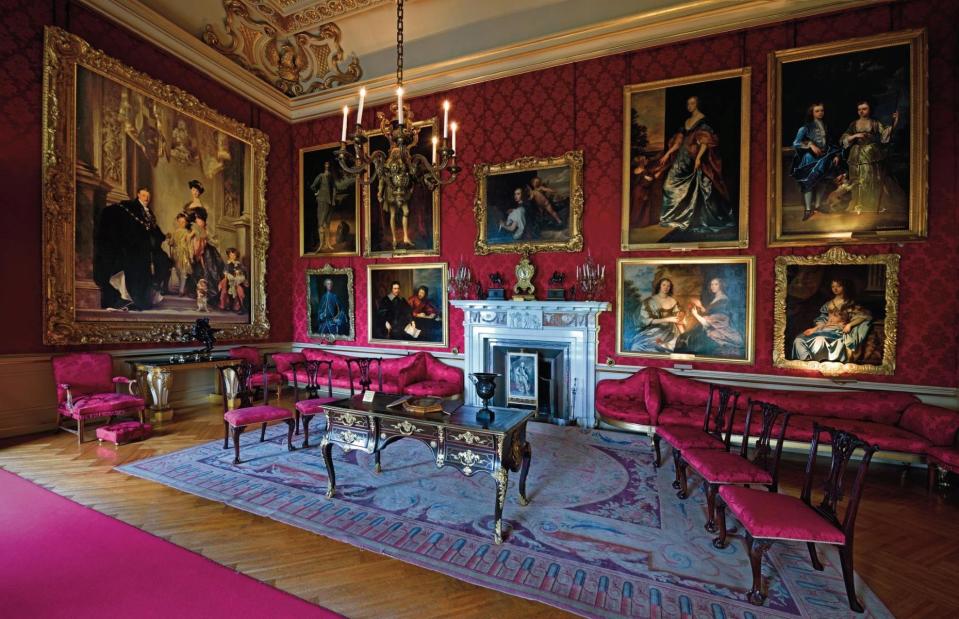
Blenheim Palace/Facebook
The glorious estate which sprawls over 12,000 acres is the only non-royal and non-ecclesiastical palace in England. It was built as a gift to John Churchill, the 1st Duke of Marlborough, from Queen Anne for his victory at the Battle of Blenheim and is still home to the current Duke and his family.
Blenheim Palace, Oxfordshire, England

Blenheim Palace/Facebook
Teeming with history, Blenheim Palace was the birthplace of Sir Winston Churchill and hosts a huge collection of Churchill memorabilia, antique furniture and priceless paintings. It also houses one of the largest and most important collections of artwork and artefacts in Europe.
Blenheim Palace, Oxfordshire, England
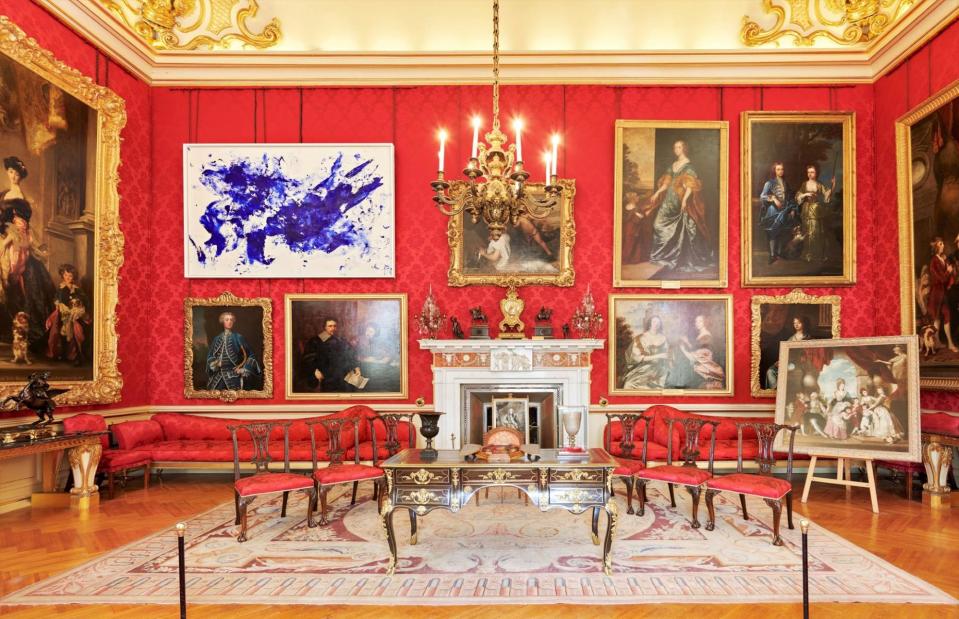
Blenheim Palace/Facebook
Some of the most breathtaking rooms include the gorgeous palace state rooms, the huge library and the incredible Great Hall, all lavishly decorated with classical sculptures, Renaissance paintings and beautiful chandeliers.
Glamis Castle, Angus, Scotland
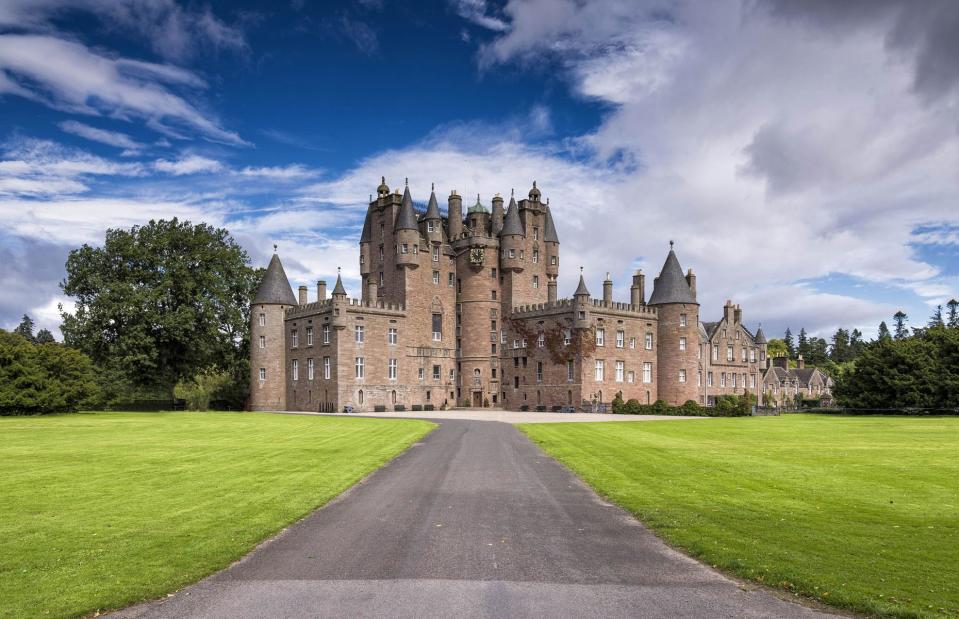
Francesco Dazzi/Shutterstock
The turreted Glamis Castle in Scotland is teeming with more than 1,000 years of history. It was even featured in William Shakespeare's tragic play Macbeth as the home of the title character. And there are some mysterious legends surrounding the property...
Glamis Castle, Angus, Scotland
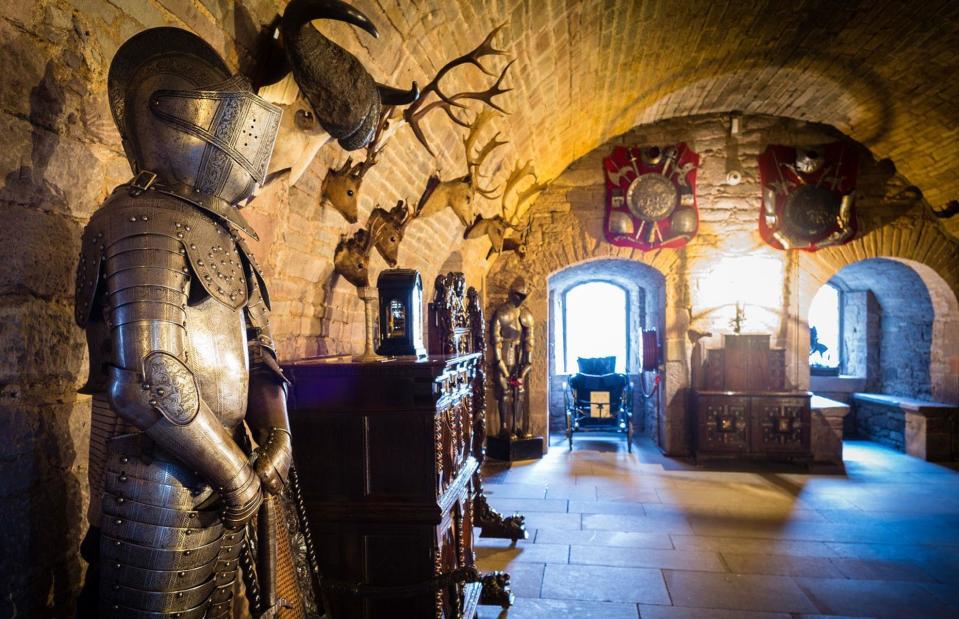
Courtesy Glamis Castle/Strathmore Estates Holdings Ltd
The best-known myth about the castle is the so-called 'Monster of Glamis', a cruel story about a child with physical disfigurements. The tale goes that the child was heir to the Lyon family but was supposedly kept hidden from the rest of the world in a secret chamber. Some members of the family have since spoken out about how they were forbidden from ever discussing the matter.
Glamis Castle, Angus, Scotland
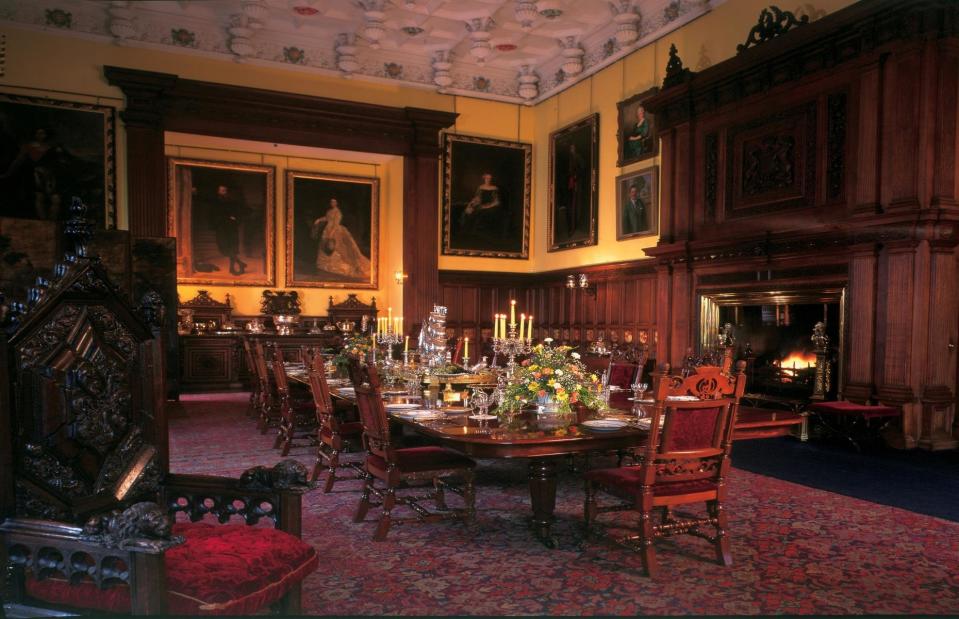
Glamis Castle/Facebook
A castle with royal roots, Glamis was also the childhood home of Elizabeth Bowes-Lyon (mother of the late Queen Elizabeth II), whose parents were Lord and Lady Glamis. The castle was also the birthplace of her second daughter Princess Margaret, the first royal baby born in Scotland since 1600.
Stonor, Oxfordshire, England
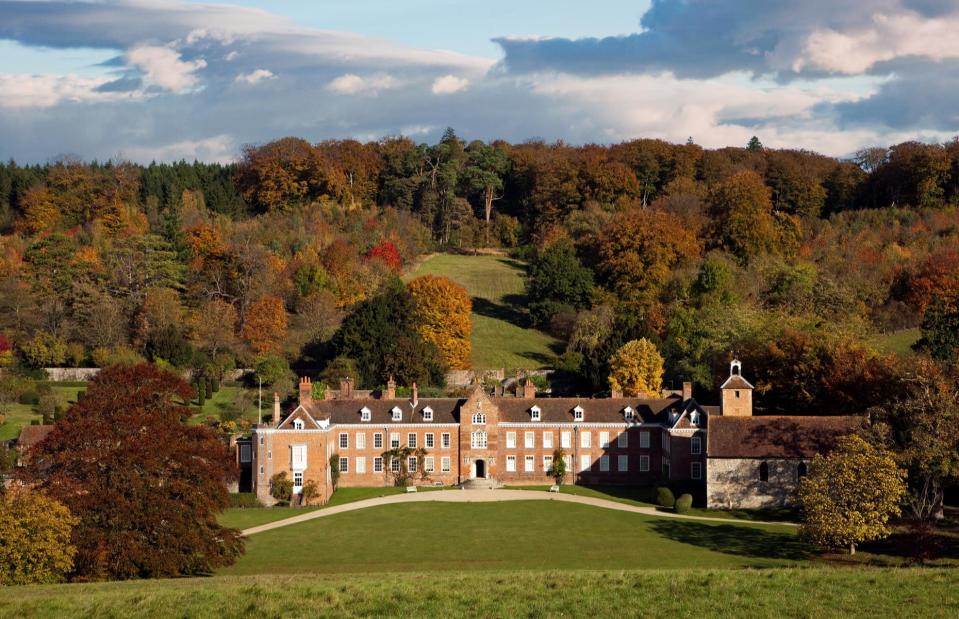
Stonor Park & Gardens/Facebook
In the Chiltern Hills of Oxfordshire, this charming country house with its gorgeous gardens has been the home of the Stonor family for more than eight centuries. It's one of Britain's oldest family manors still lived in today.
Stonor, Oxfordshire, England
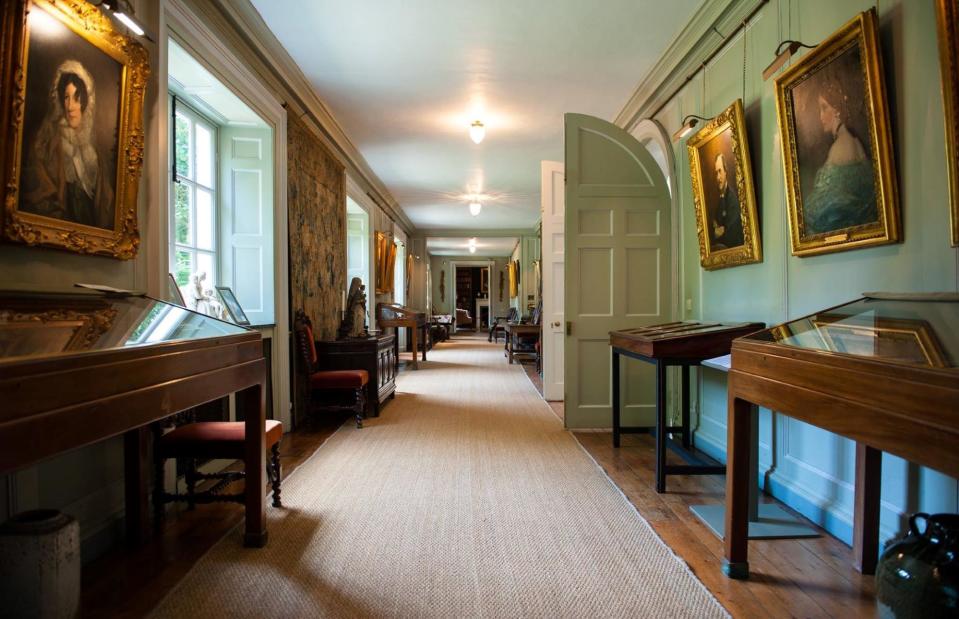
Stonor Park & Gardens/Facebook
The house was constructed on the site of an ancient pagan stone circle. The remains of the stone can still be seen symbolically supporting the corner of the estate's 13th-century family chapel, one of the earliest surviving buildings.
Stonor, Oxfordshire, England
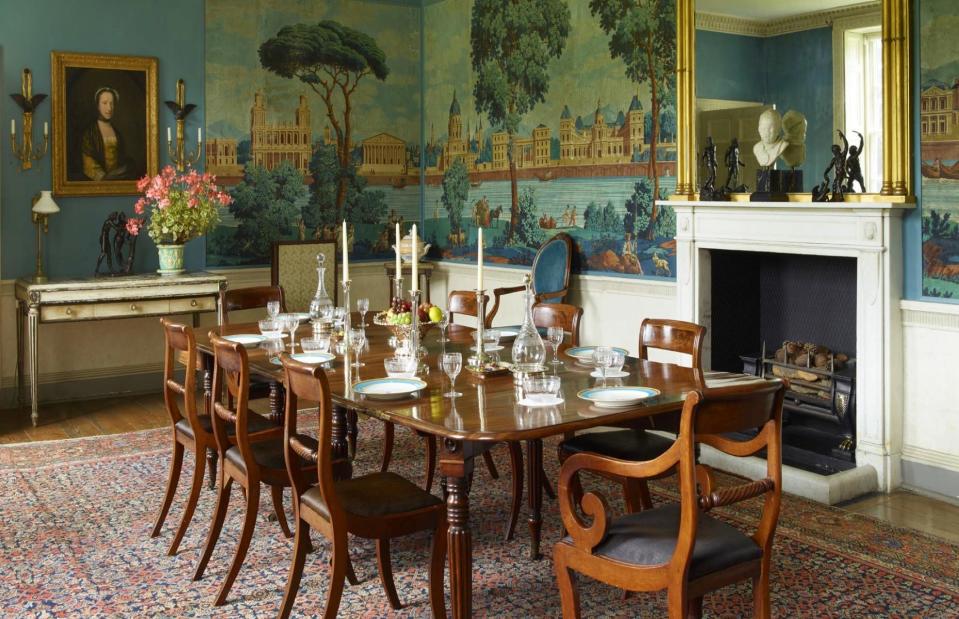
Stonor Park & Gardens/Facebook
The house is a treasure trove of historical artefacts and art, including family portraits, Old Master drawings and paintings, bronze and wooden sculptures and a pair of Venetian globes. The collection spans the 16th to the 20th century.
Stonor, Oxfordshire, England
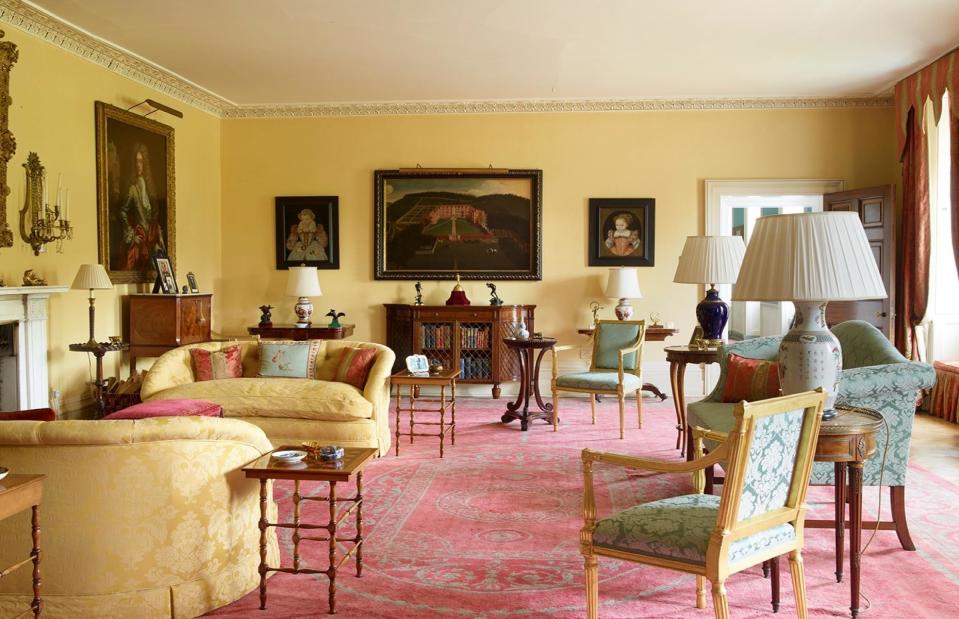
Stonor Park & Gardens/Facebook
Highlights of the estate include the opulent 17th-century library, the grand Gothic Revival hall and the gorgeous parkland filled with wildlife including fallow deer, badgers, rabbits and pheasants. There’s also a 17th-century Italianate pleasure garden featuring Renaissance ponds and fountains, and a secluded Japanese-style hideaway among the trees.
Knole, Kent, England
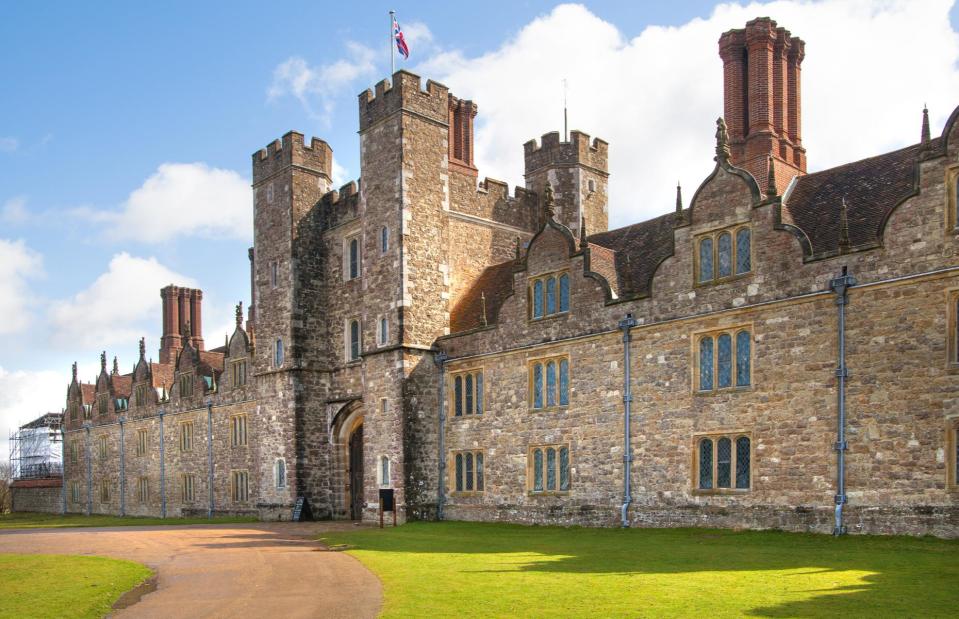
IR Stone/Shutterstock
Nestled in 1,000 acres of parkland, Knole is a gorgeous country pile in the town of Sevenoaks. It's had many incarnations throughout its life – a manor house, a palace for the Archbishops of Canterbury, a royal Tudor residence and a grand aristocratic house.
Knole, Kent, England
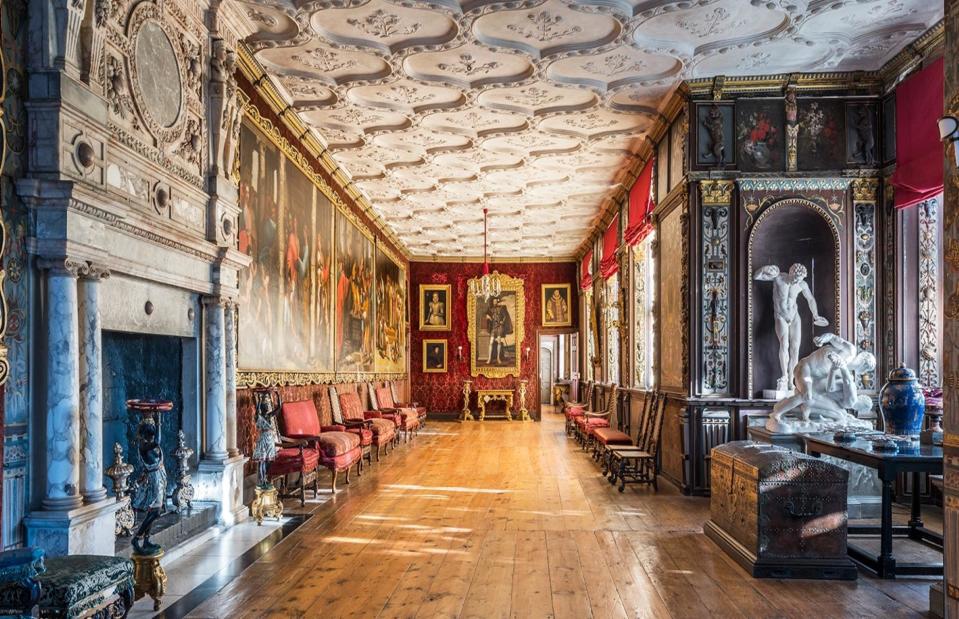
Knole/Facebook
In 1456, the original manor house was sold to Thomas Bourchier, the Archbishop at the time, who enlisted craftsmen from the royal palace to help build and extend his stunning home.
Knole, Kent, England
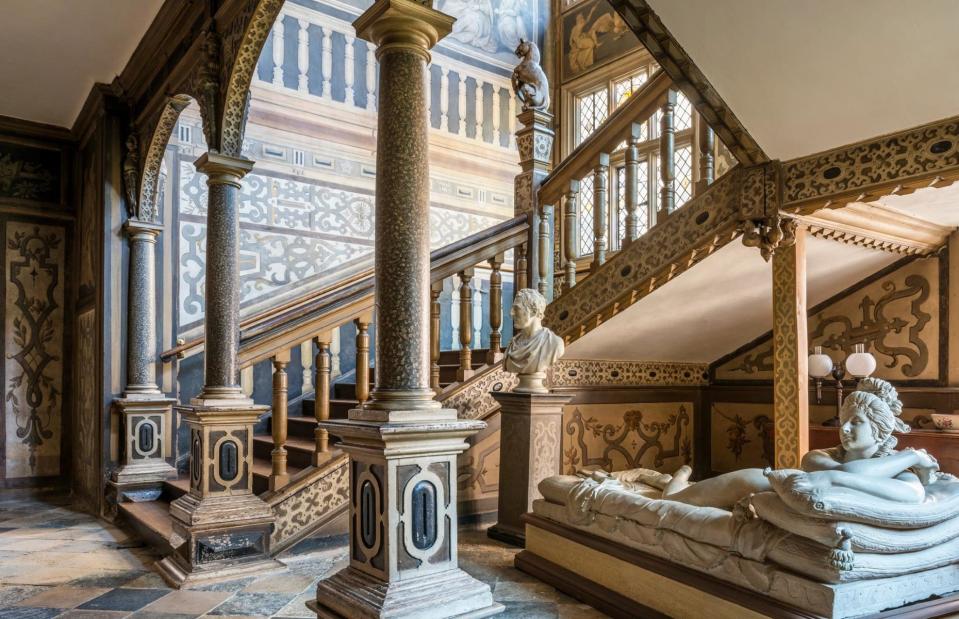
Knole/Facebook
After Bourchier’s death in 1486, the house was passed down to four more bishops over the next century and was also used by Henry VIII as a base for hunting. In 1603, it came into the ownership of the 1st Earl of Dorset, Thomas Sackville.
Knole, Kent, England

Knole/Facebook
The impressive estate still houses many of the Sackville family’s treasures spanning 13 generations, including one of the rarest and most impressive collections of Stuart royal furniture and art. In particular, Knole's Brown Gallery features incredible portraits of contemporary figures from the 16th and 17th centuries.
Mount Stuart, Isle of Bute, Scotland
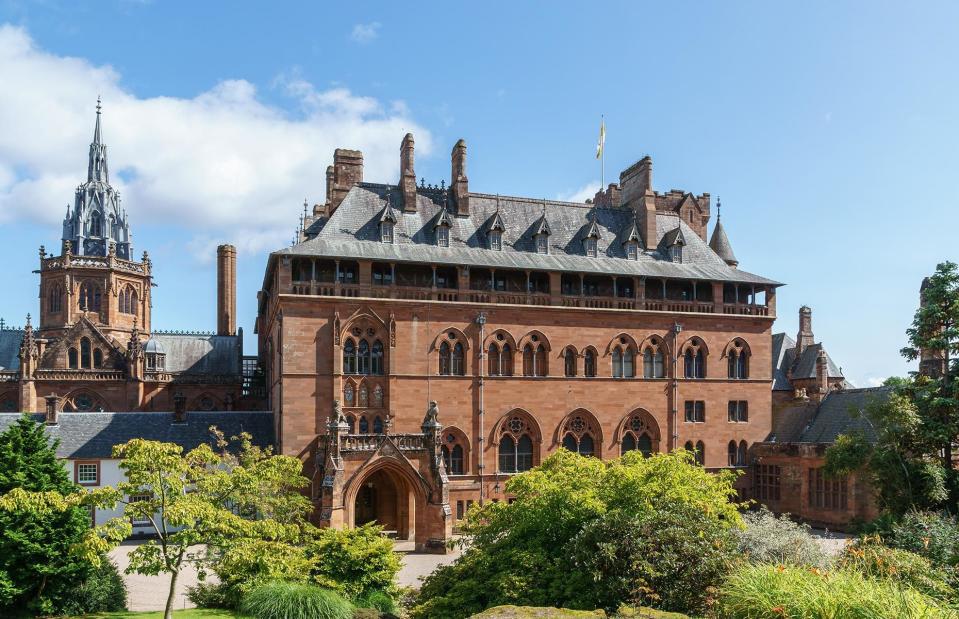
User:Colin/Flickr/CC BY-SA 2.0
Located on the Isle of Bute in Scotland, Mount Stuart is a unique blend of Victorian and Georgian architectural styles. The original house was built in 1719 but was renovated after being damaged by a fire in 1877. Most of the house's contents survived the fire, including the original Georgian wings.
Mount Stuart, Isle of Bute, Scotland
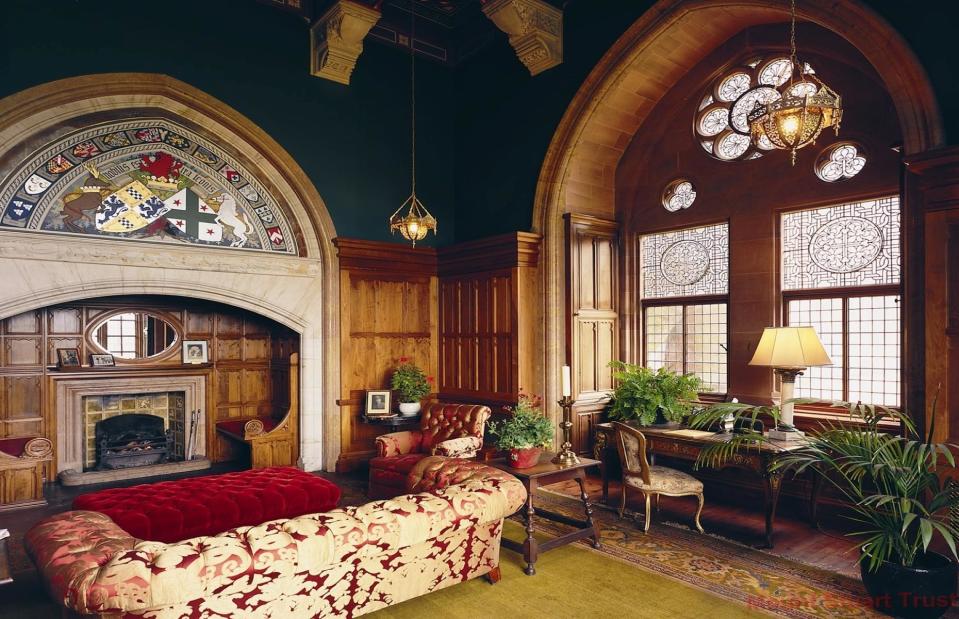
Mount Stuart/Facebook
No expense was spared by the 3rd Marquess of Bute in designing his eclectic home. The new house was a mix of Georgian and Victorian styles, far grander than the original, with decorative arches, elegant windows and even its own chapel with a stunning spire tower.
Mount Stuart, Isle of Bute, Scotland
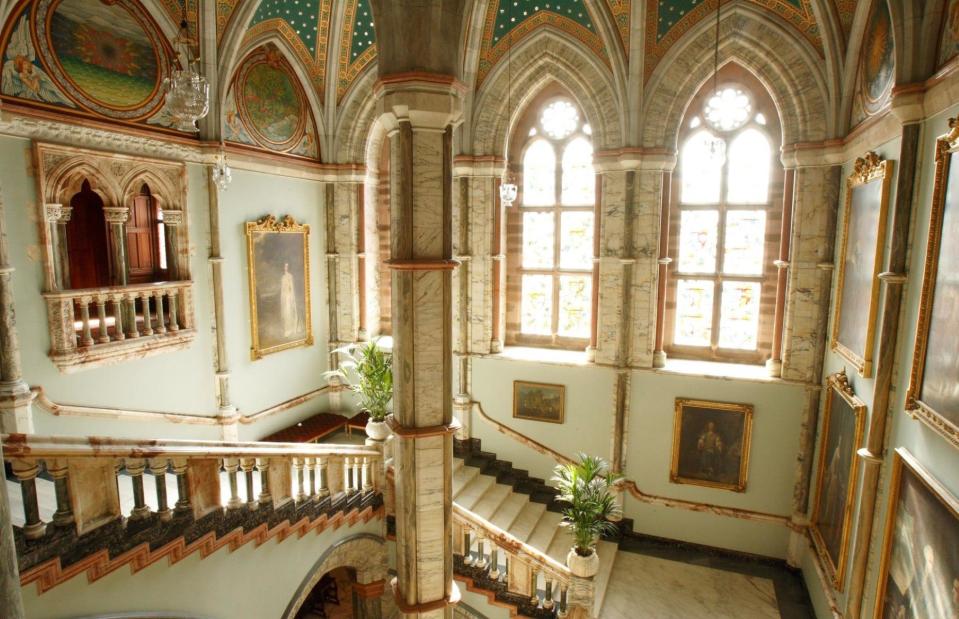
Mount Stuart/Facebook
What's perhaps most impressive is that Mount Stuart is believed to be the first house in Scotland to install an indoor heated swimming pool and a central heating system. And it's all still working today.
Mount Stuart, Isle of Bute, Scotland
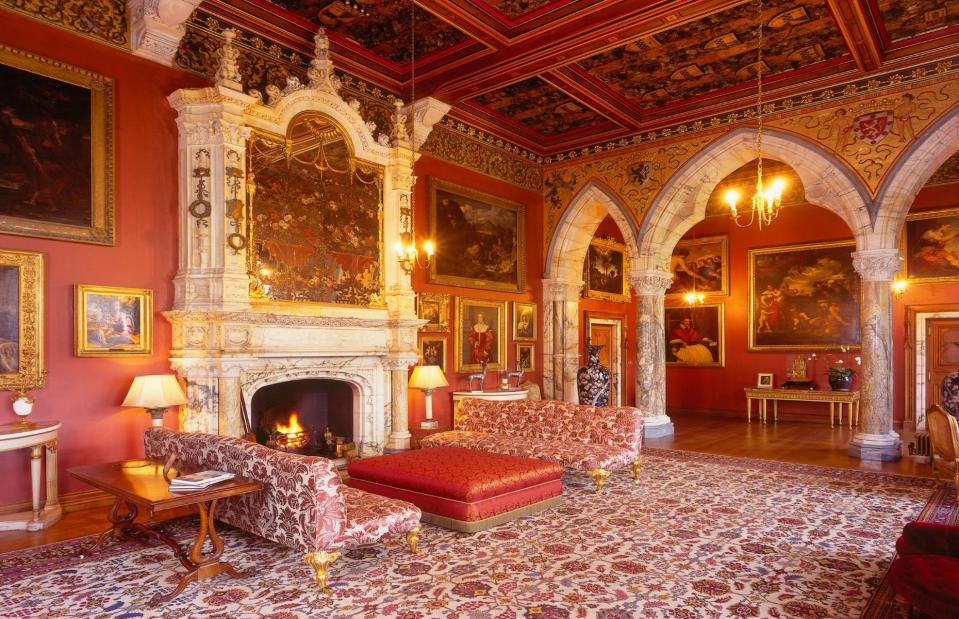
Mount Stuart/Facebook
As well as having the latest technology, the house is also a treasure trove of antiques and artefacts, some dating back to the 15th century. The glorious library houses thousands of valuable manuscripts including Shakespeare’s First Folio.
Waddesdon Manor, Buckinghamshire, England
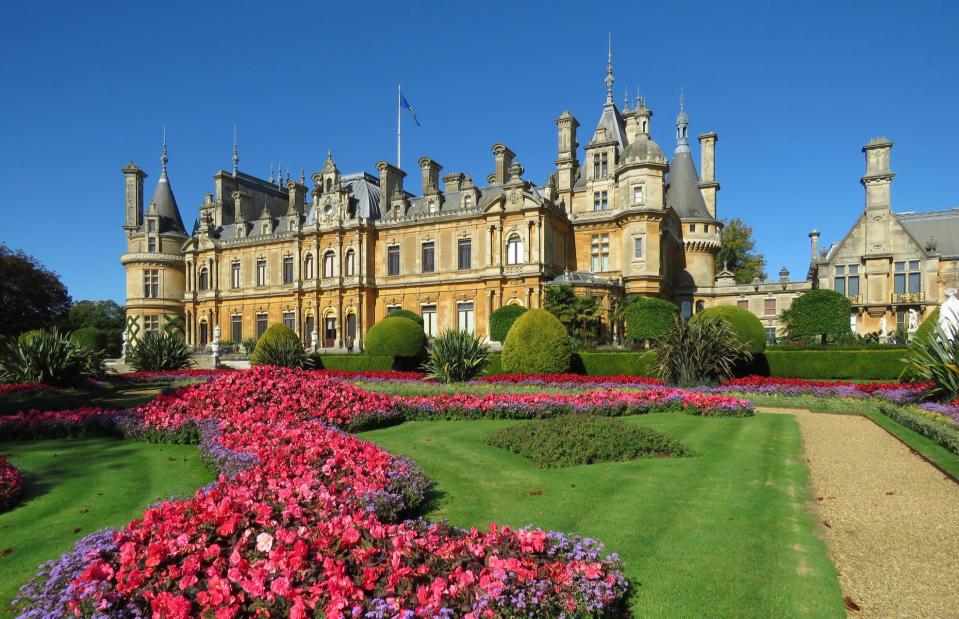
Waddesdon Manor/Facebook
This lovely manor in Buckinghamshire was originally built by Baron Ferdinand de Rothschild during the 1870s. It was to be his summer escape from London, where he could entertain his family and friends.
Waddesdon Manor, Buckinghamshire, England
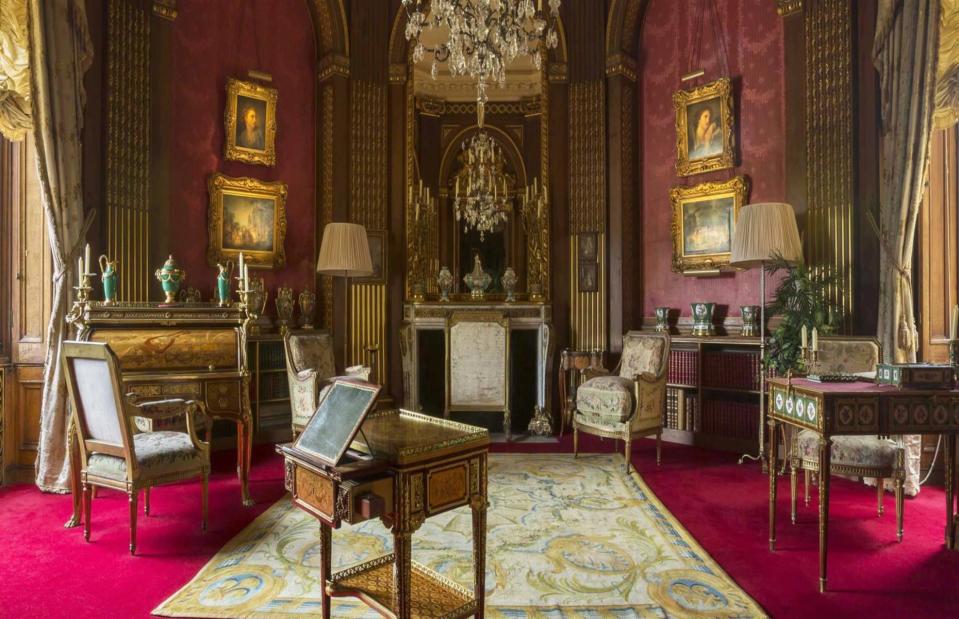
Waddesdon Manor/Facebook
The land was an empty agricultural estate which was transformed over the years into a beautiful home. The house was completed in 1883 and fulfilled its purpose, hosting many parties over the years. Even Queen Victoria visited the house and was reportedly impressed with the electric lights which were installed in 1889.
Waddesdon Manor, Buckinghamshire, England
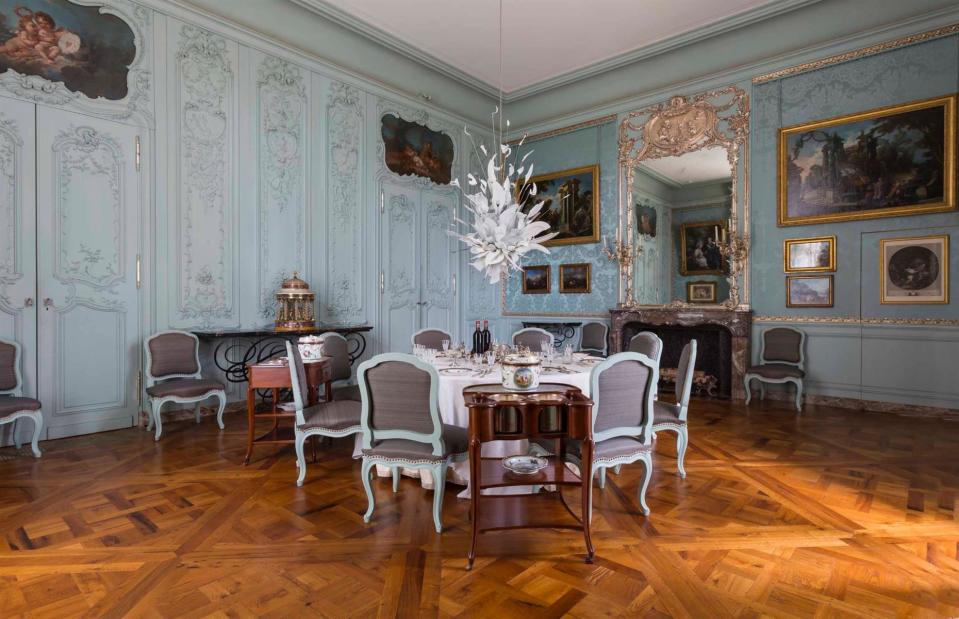
Waddesdon Manor/Facebook
The Renaissance-style home remained unchanged for years, featuring a huge collection of 18th-century portraits by artists such as Gainsborough and Reynolds, plus French carpets, Dutch paintings and many Renaissance treasures. During the Second World War, rooms were emptied and it was used to house evacuated children from London.
Waddesdon Manor, Buckinghamshire, England
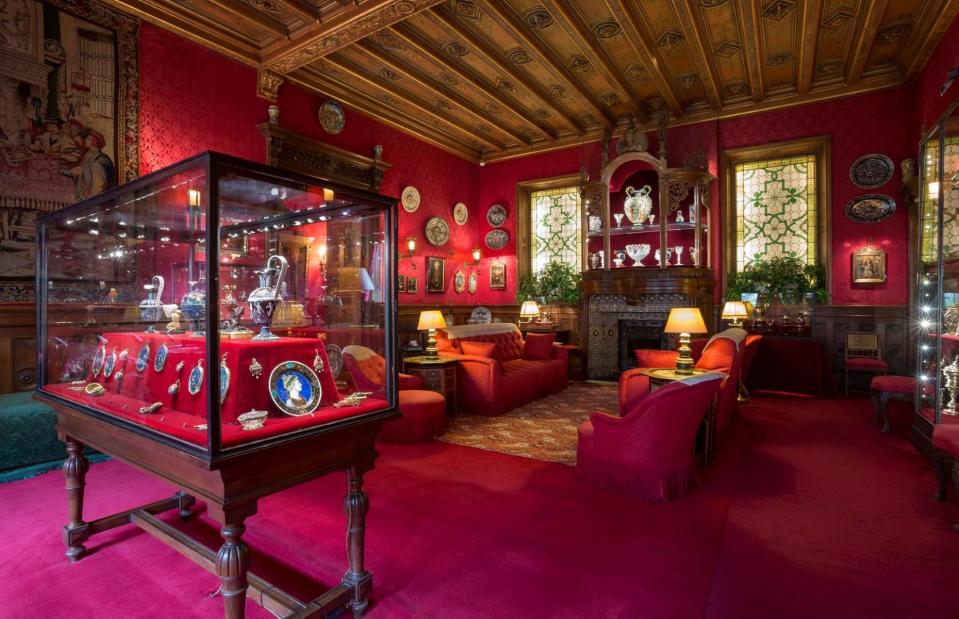
Waddesdon Manor/Facebook
After the death of Baron Ferdinand de Rothschild and later his sister Alice de Rothschild, Waddesdon was passed on to her French great-nephew James de Rothschild. The house was then given to the National Trust after James died in 1957.
Hampton Court Palace, London, England
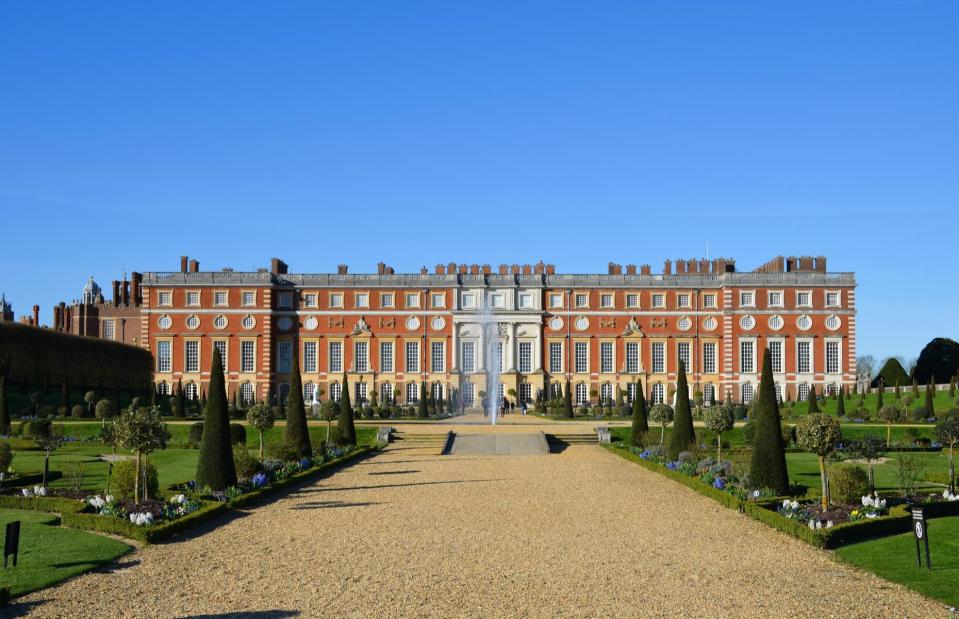
ioyla/Shutterstock
Commissioned by Cardinal Thomas Wolsey in the early 16th century, Hampton Court is a lavish royal palace located in Richmond upon Thames, Greater London. Wolsey, King Henry VIII's Lord Chancellor, transformed the house from a country retreat to a palace fit for a king.
Hampton Court Palace, London, England
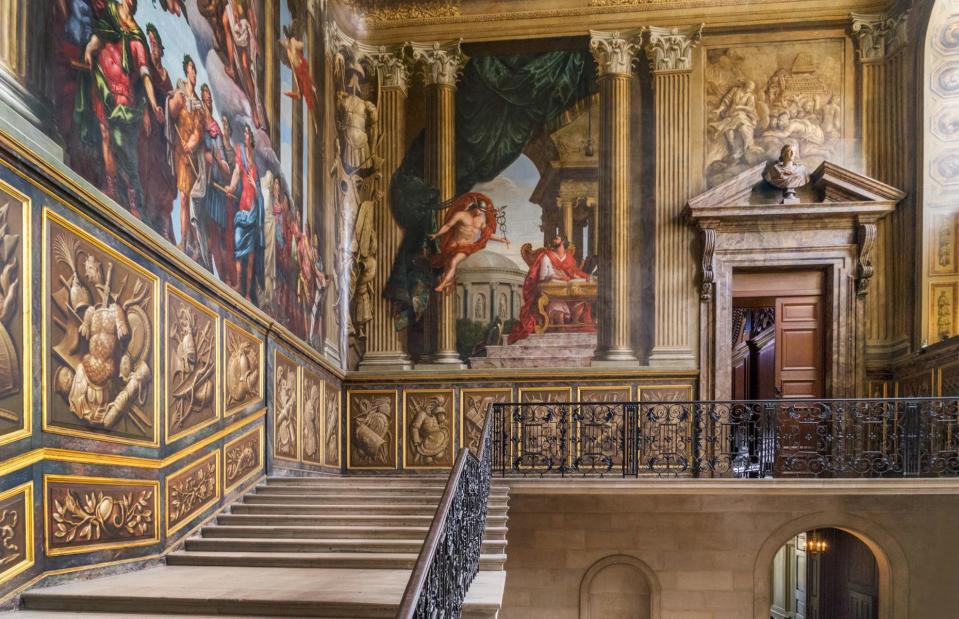
Gordon Bell/Shutterstock
After seeing the mansion during the 1530s, Henry VIII was so impressed with its beauty and luxury that he moved in to host elaborate events for his Tudor court and brought all of his six wives to the palace. Hampton Court was not just a home, it became a hotel, theatre and pleasure palace for the king to wow his guests.
Hampton Court Palace, London, England
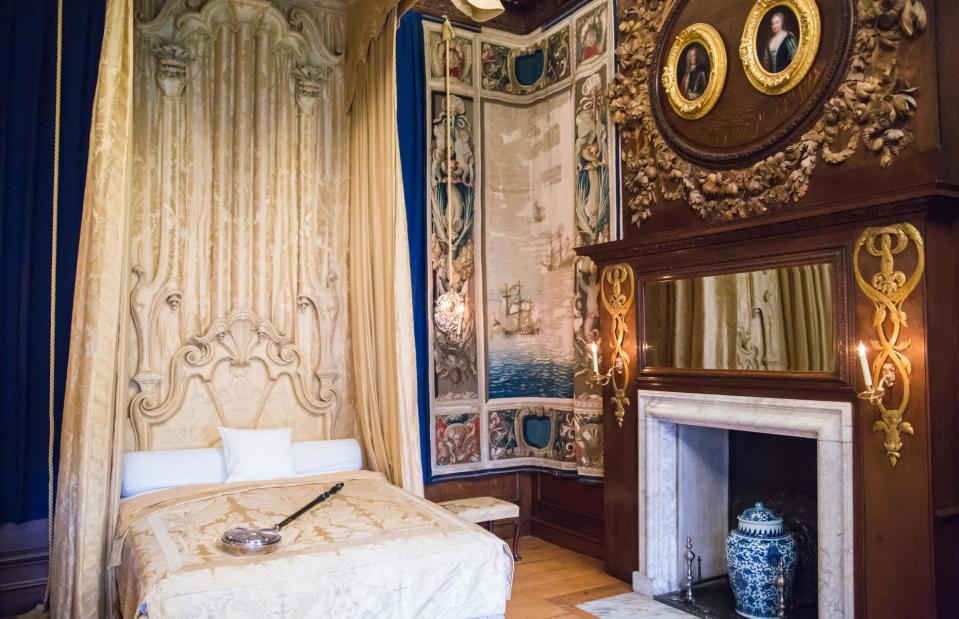
IR Stone/Shutterstock
As well as being known as a popular spot for the king to entertain, Hampton Court is also infamous for its grim and ghostly history. On 12 October 1537, Henry's third wife Jane Seymour died here while giving birth to his long sought-after son Edward VI. It's thought her ghost appears around the palace on the anniversary of her tragic death.
Hampton Court Palace, London, England
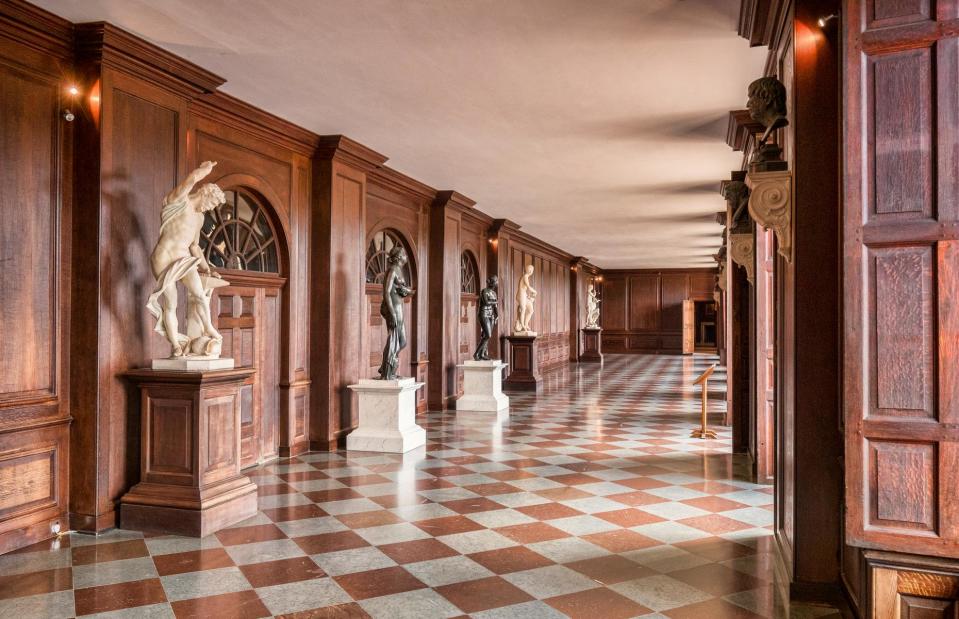
travellight/Shutterstock
The palace was also where Henry VIII's fifth wife Catherine Howard was famously arrested before her execution at the Tower of London for adultery and treason. Her ghost has been heard screaming for mercy along the palace corridors.
Basildon Park, Berkshire, England

Basildon Park - National Trust/Facebook
This stunning Georgian mansion lies in the idyllic Berkshire countryside and was first purchased by Sir Francis Sykes in 1771, who made his fortune in the East India Company. Sykes demolished the original house, hiring architect John Carr to create the present-day mansion, made from beautiful Bath stone.
Basildon Park, Berkshire, England
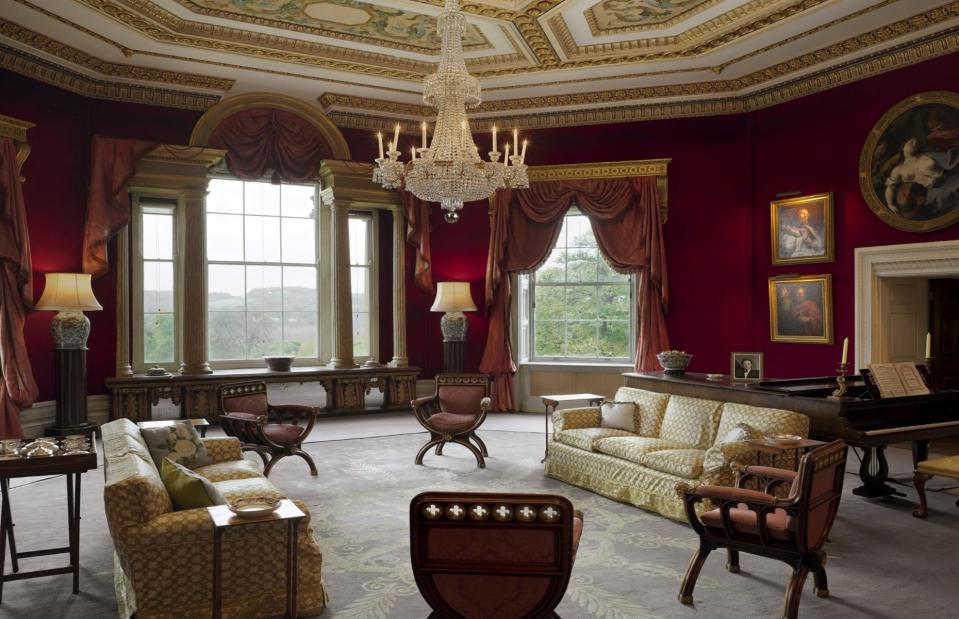
Basildon Park - National Trust/Facebook
The splendid estate was owned by the Sykes family until 1838 when it was bought by politician James Morrison. Like many of England's stately homes, Basildon was used during both world wars, first as a recovery home for soldiers in the First World War, then for army training and as a prisoner-of-war camp during the Second World War.
Basildon Park, Berkshire, England
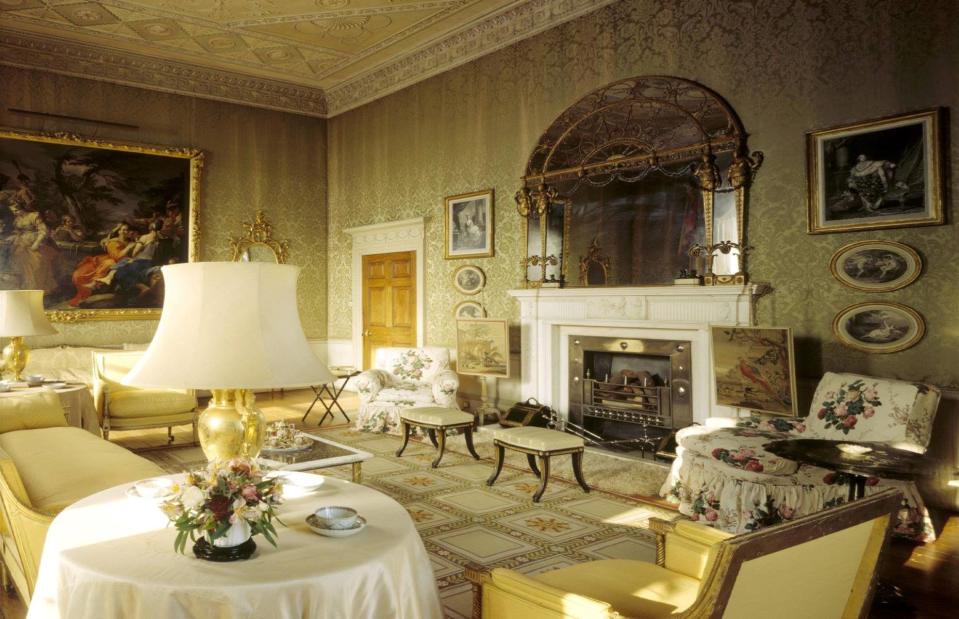
Basildon Park - National Trust/Facebook
Sadly Basildon was badly damaged during the war but was eventually revived and restored by the park's final owners, Lord Edward and Lady Renee lliffe, during the 1950s. After the couple spent 25 years in the mansion, they gifted the grand property to the National Trust in 1978.
Basildon Park, Berkshire, England
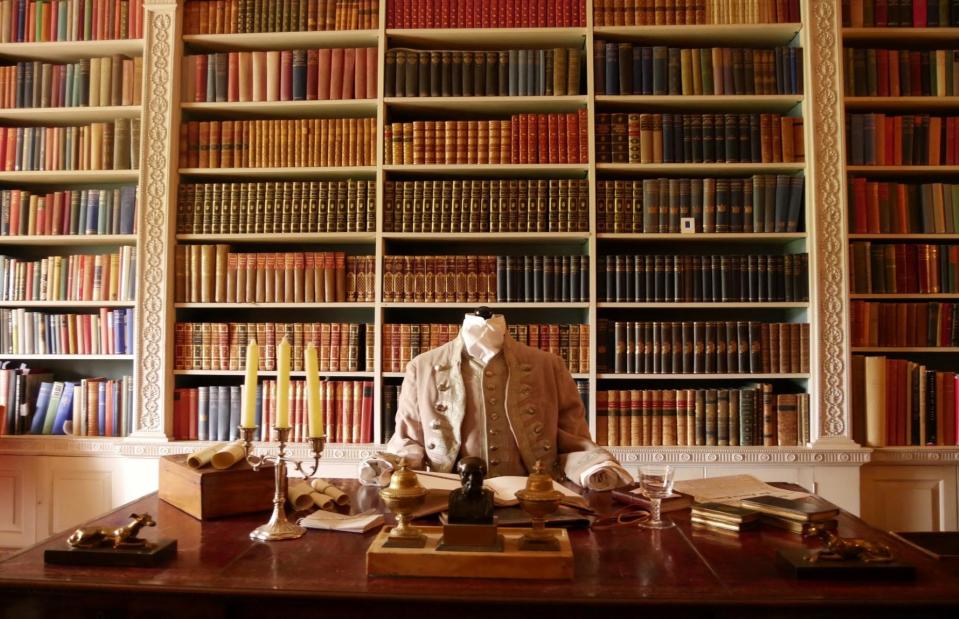
Basildon Park - National Trust/Facebook
The striking mansion has had some time in the spotlight. It was used as a filming location for 2006 film Marie Antoinette, starring Kirsten Dunst, and 2009 film Dorian Gray, starring Colin Firth. More recently, the interior was used for the Crawley family’s London mansion in the TV series Downton Abbey.
Burghley House, Lincolnshire, England
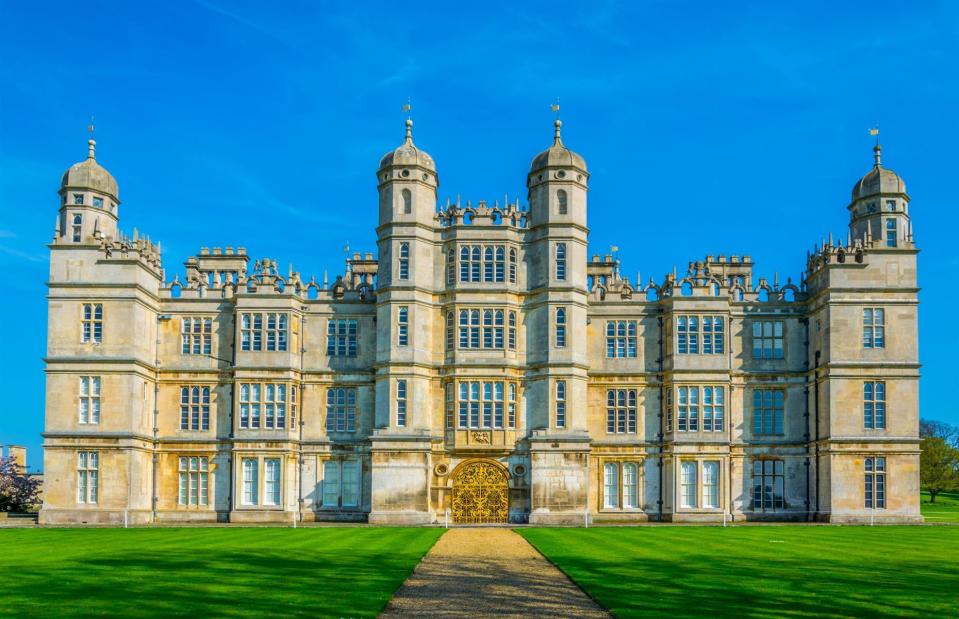
trabantos/Shutterstock
Less than two miles from Stamford, this Elizabethan treasure was built in the mid-16th century for Sir William Cecil, Lord High Treasurer to Queen Elizabeth I. Cecil was also the Queen's chief advisor for the majority of her reign and later became the 1st Baron Burghley after the house was built.
Burghley House, Lincolnshire, England
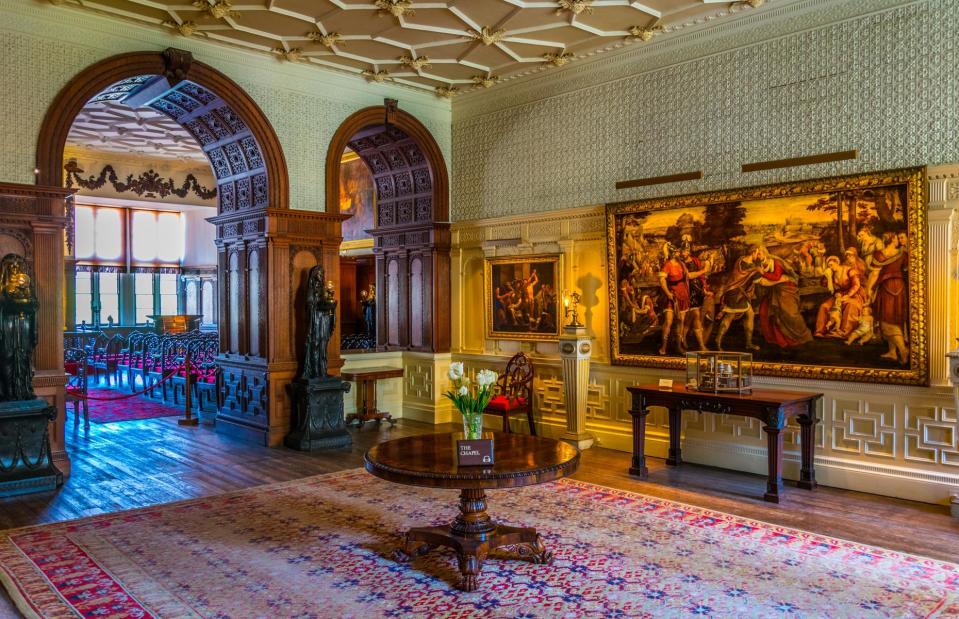
trabantos/Shutterstock
The sprawling manor took a whopping 32 years to be fully completed. It houses a beautiful and huge Tudor kitchen, a billiard room, plush bedrooms, dressing rooms and numerous grand state rooms.
Burghley House, Lincolnshire, England
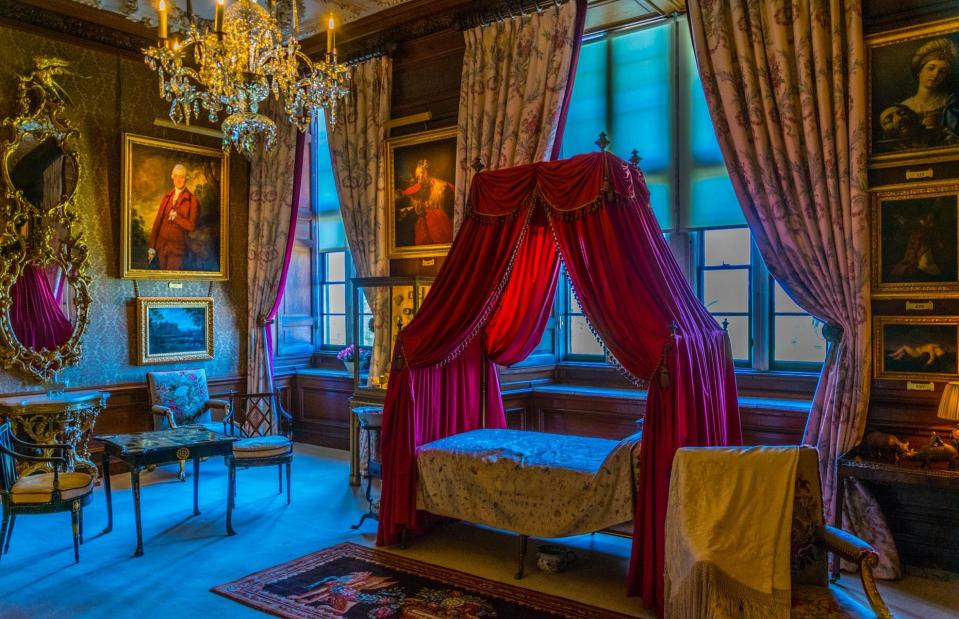
trabantos/Shutterstock
After the 9th Earl of Exeter inherited the house in 1754, he hired the famous Capability Brown to help modernise the property and grounds. A stylish orangery, a Gothic-style summerhouse and large stables were added.
Burghley House, Lincolnshire, England

trabantos/Shutterstock
Burghley is home to a massive collection of artefacts and artworks from around the world including ceramics, English portrait miniatures and what is believed to be one of the best collections of Chinese snuff bottles in the Western Hemisphere.
Now check out these incredible then-and-now images of the UK's most famous landmarks


